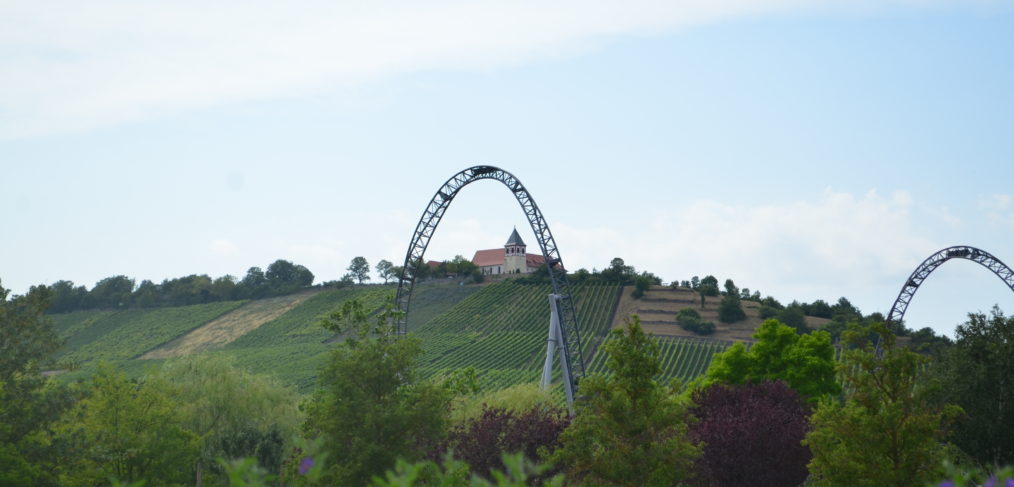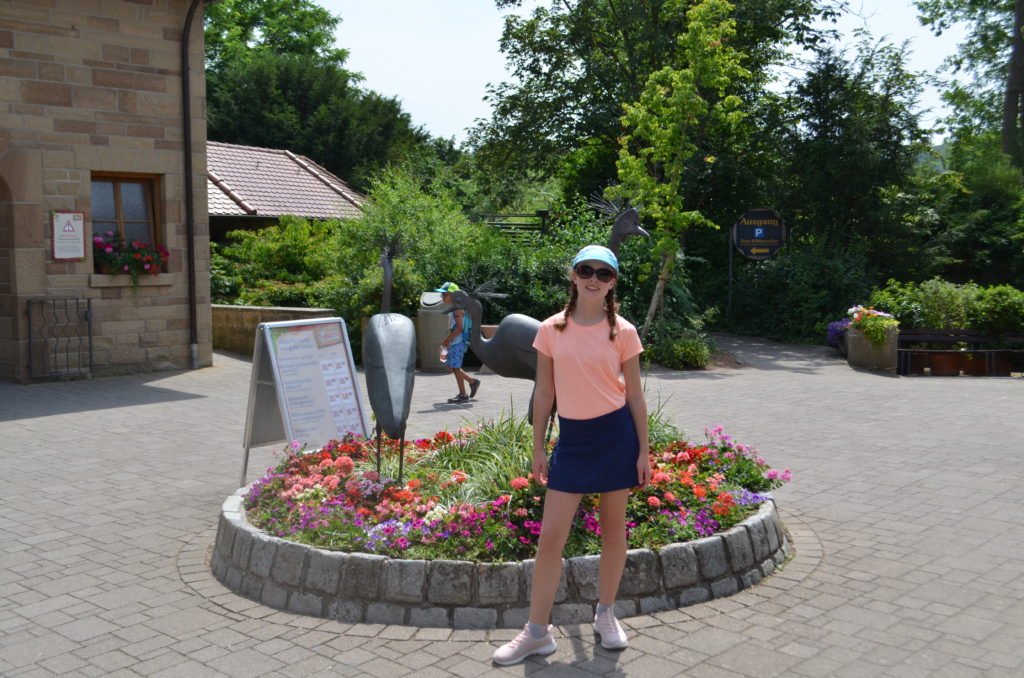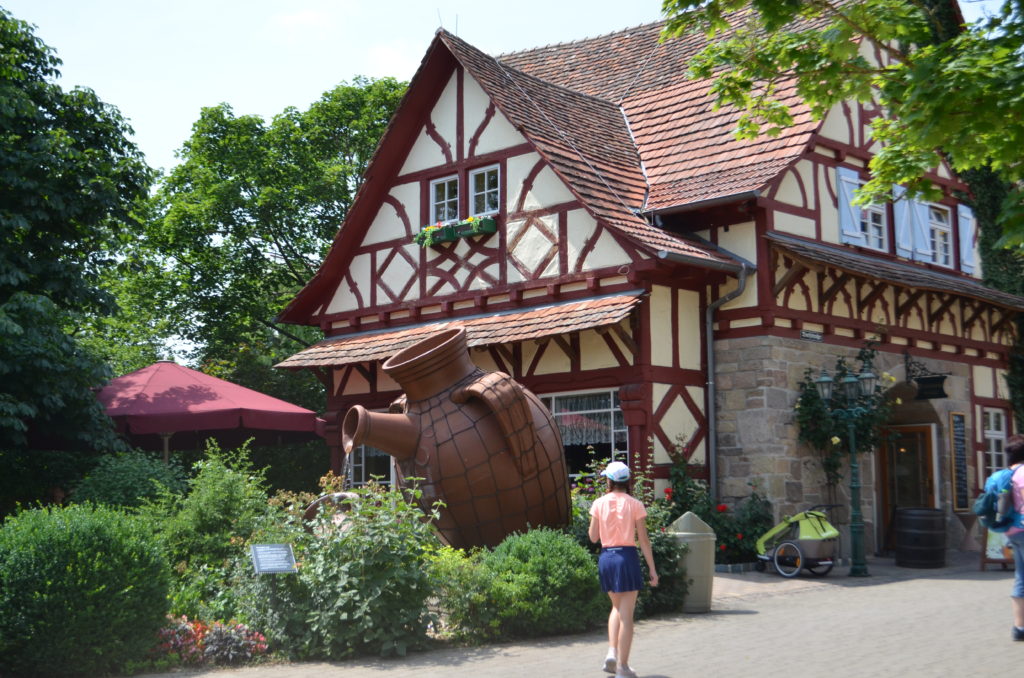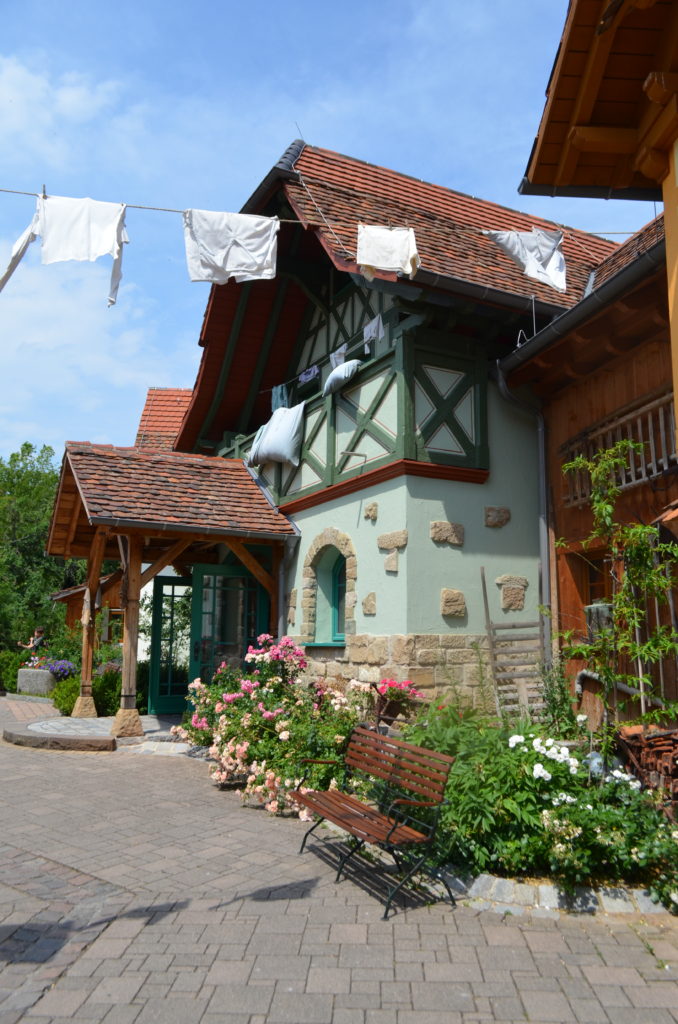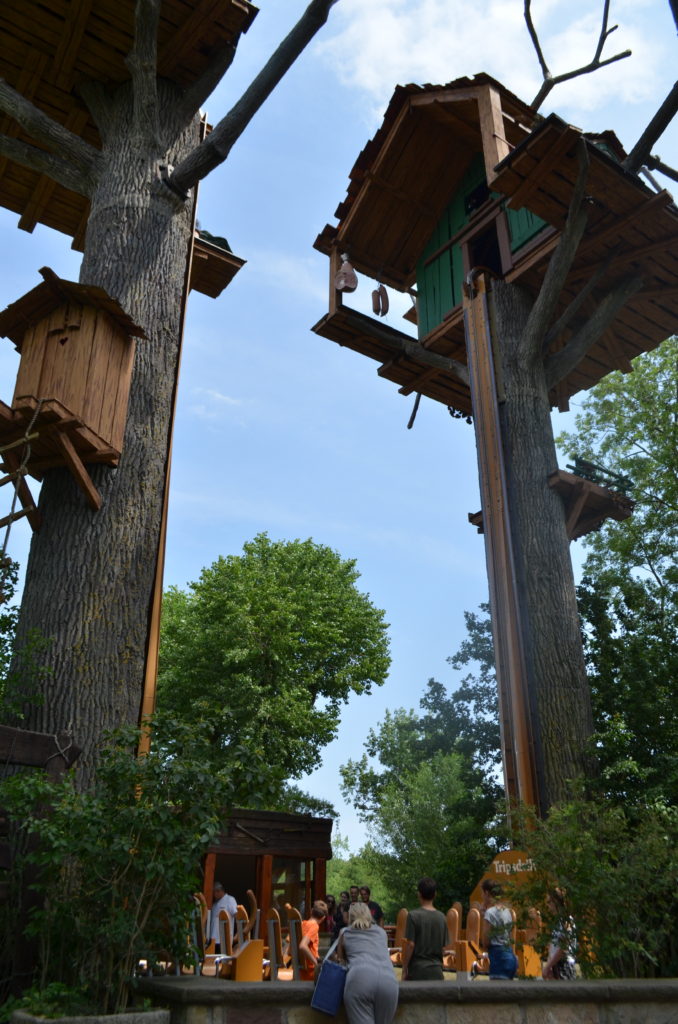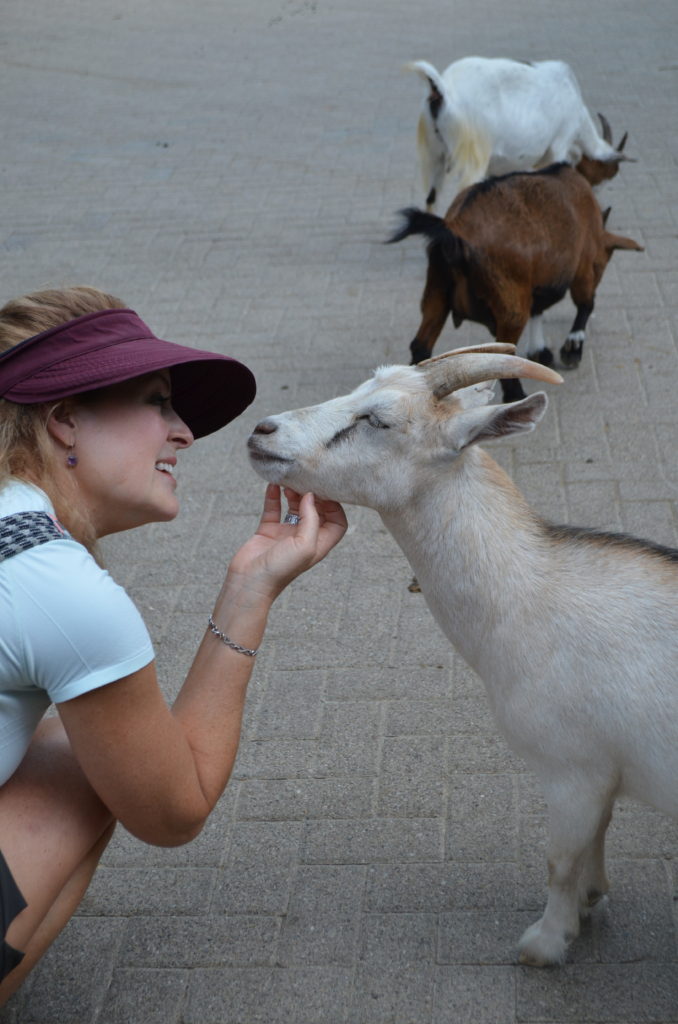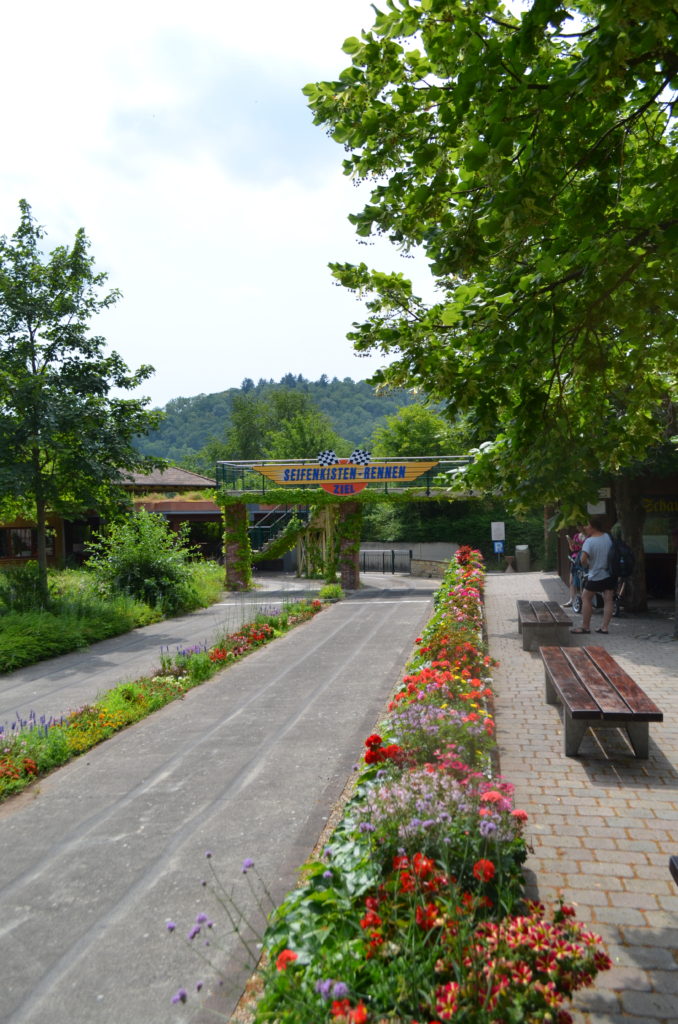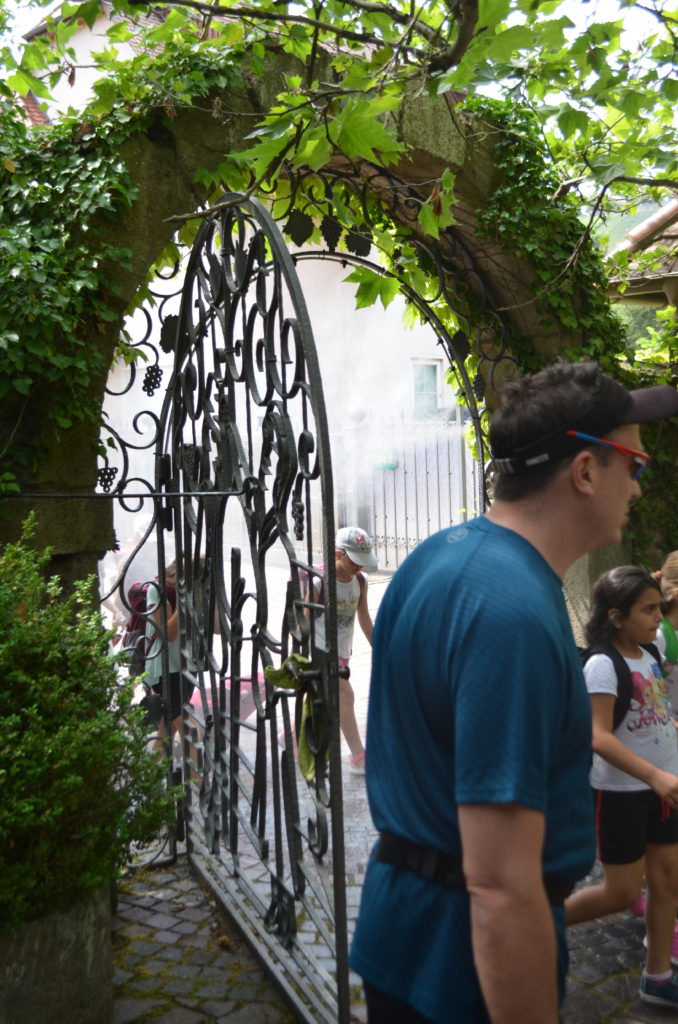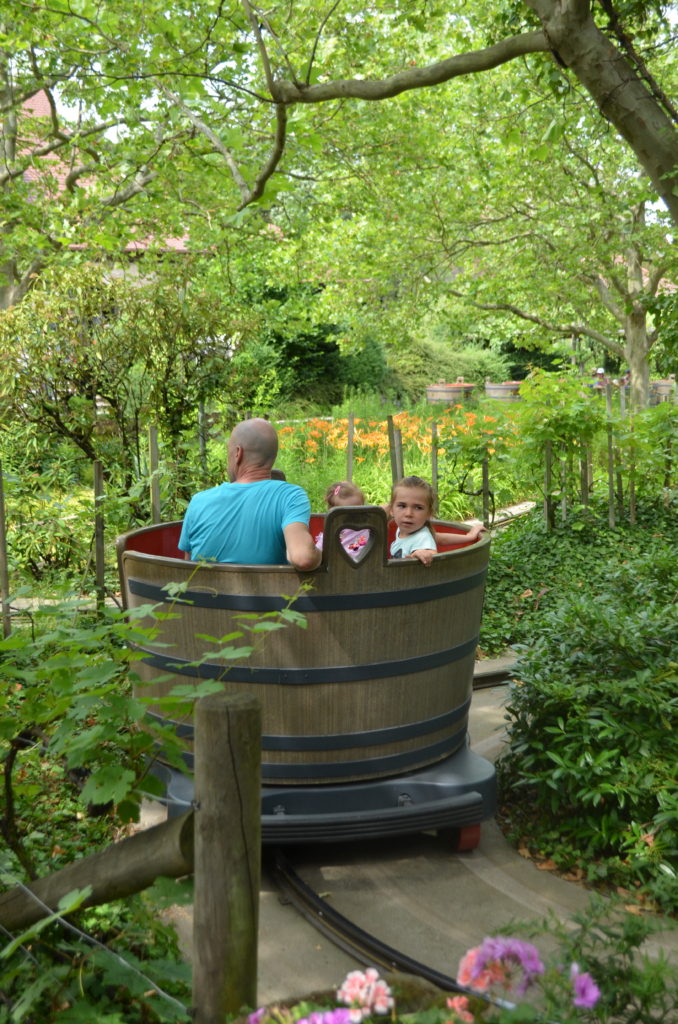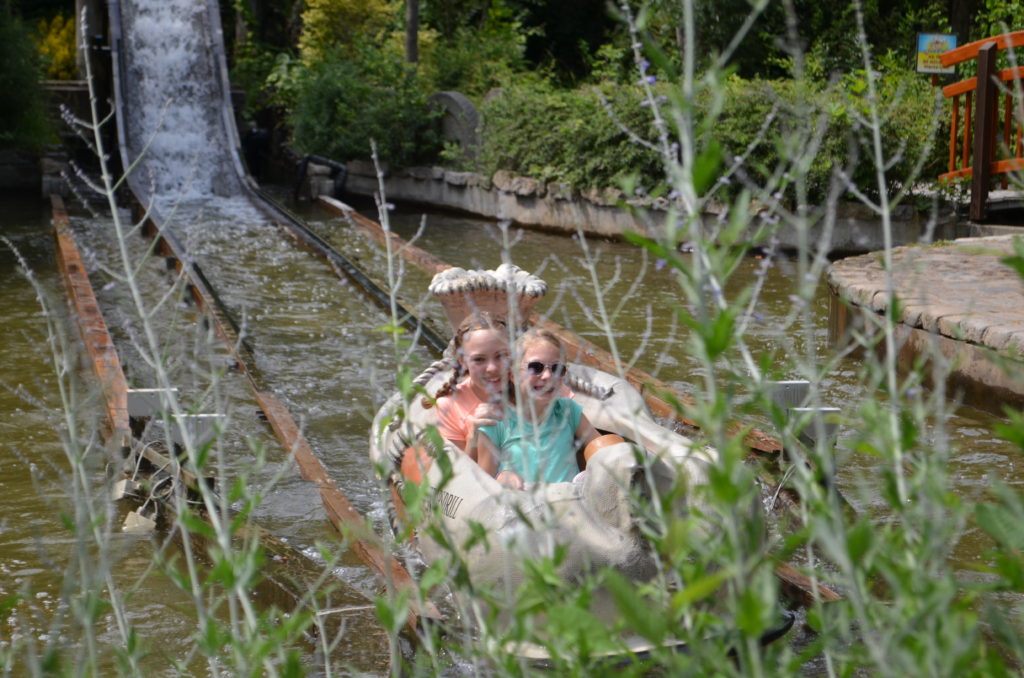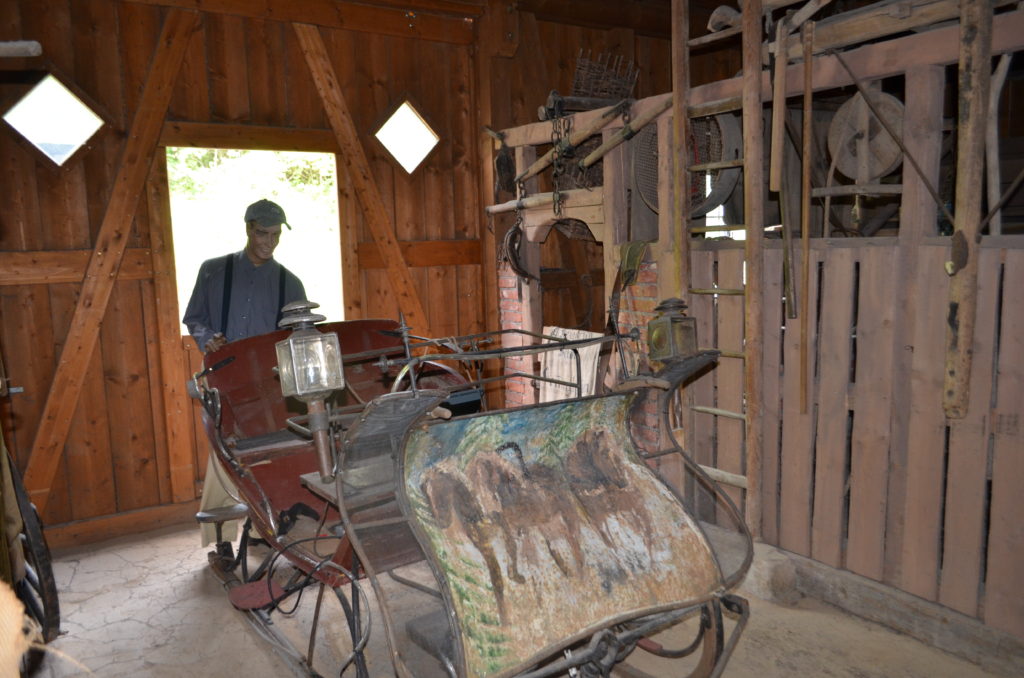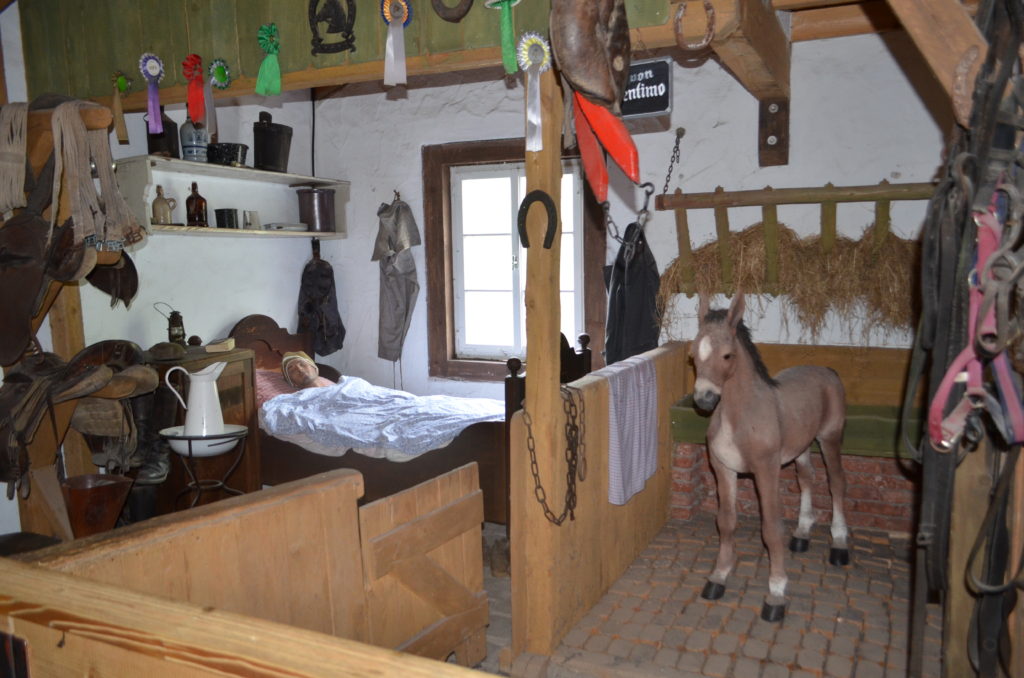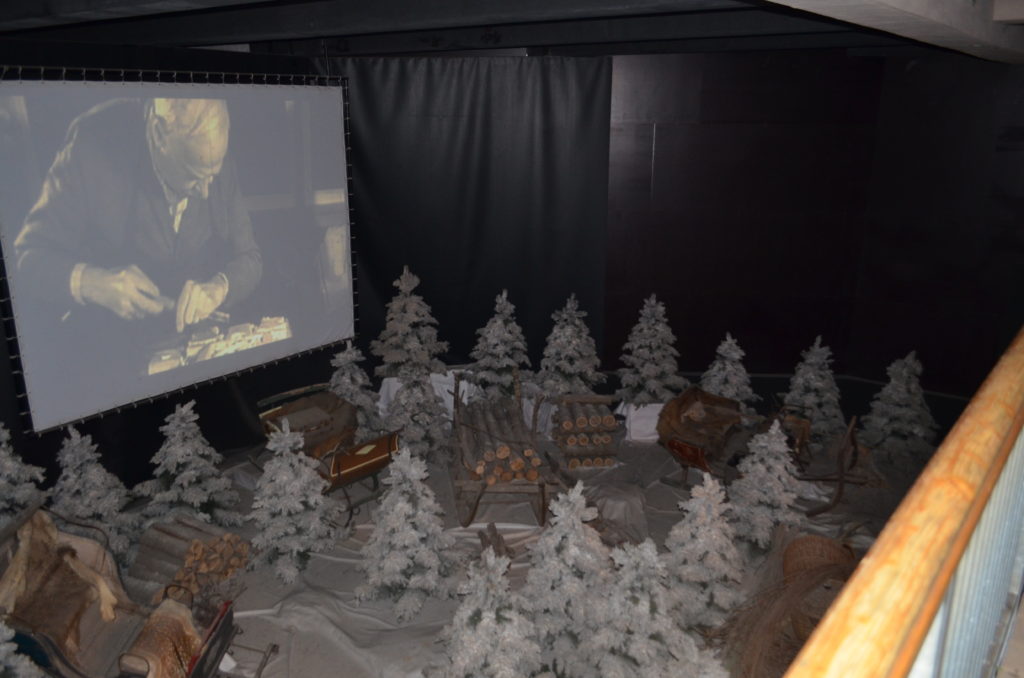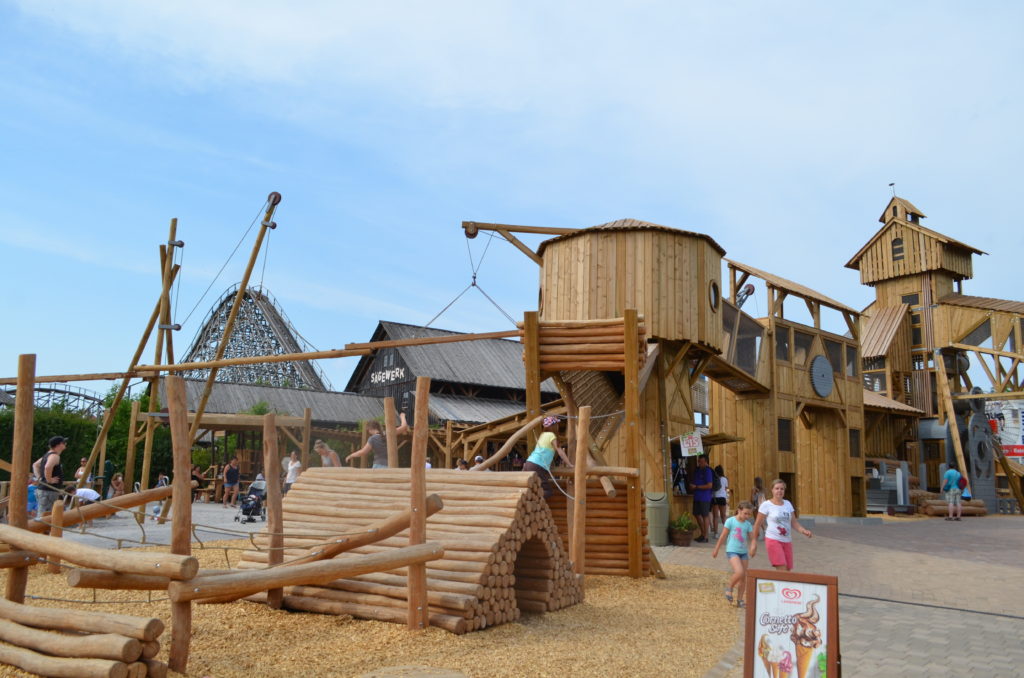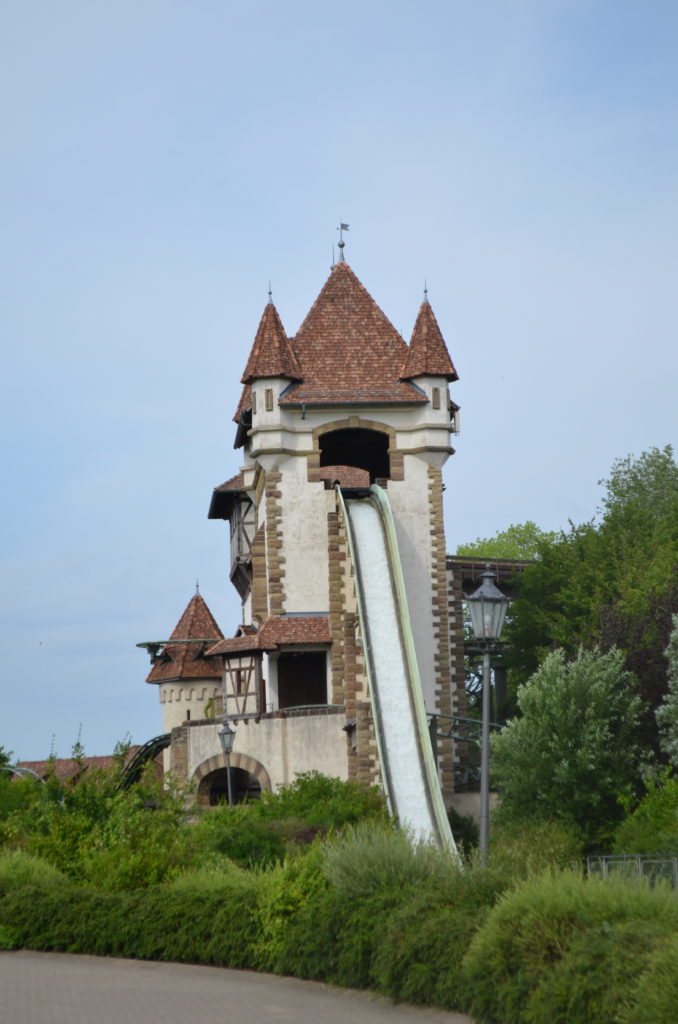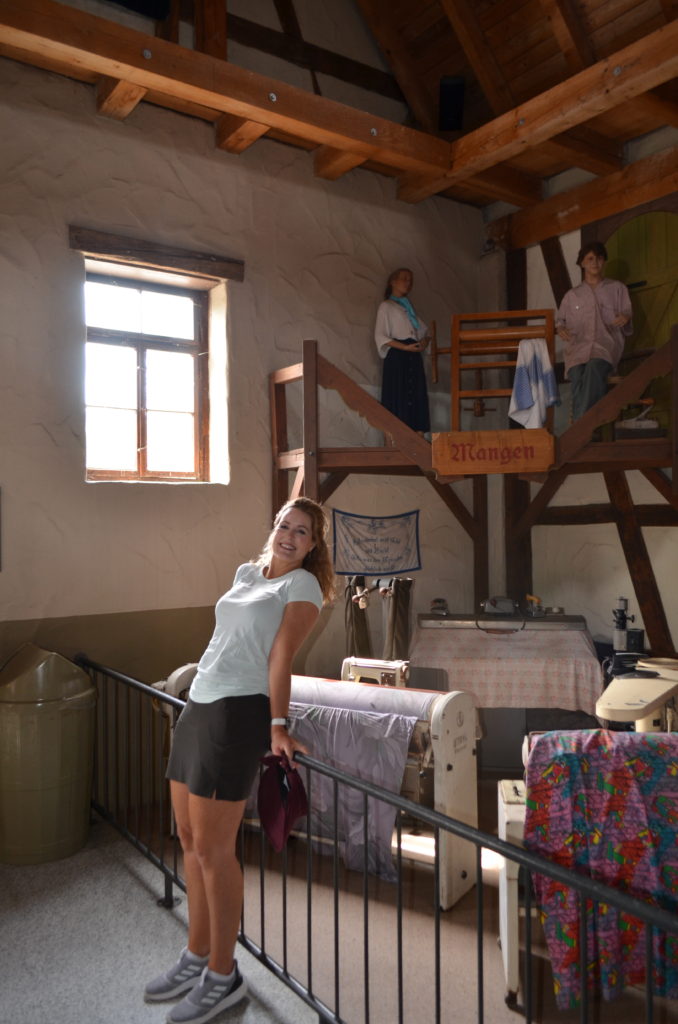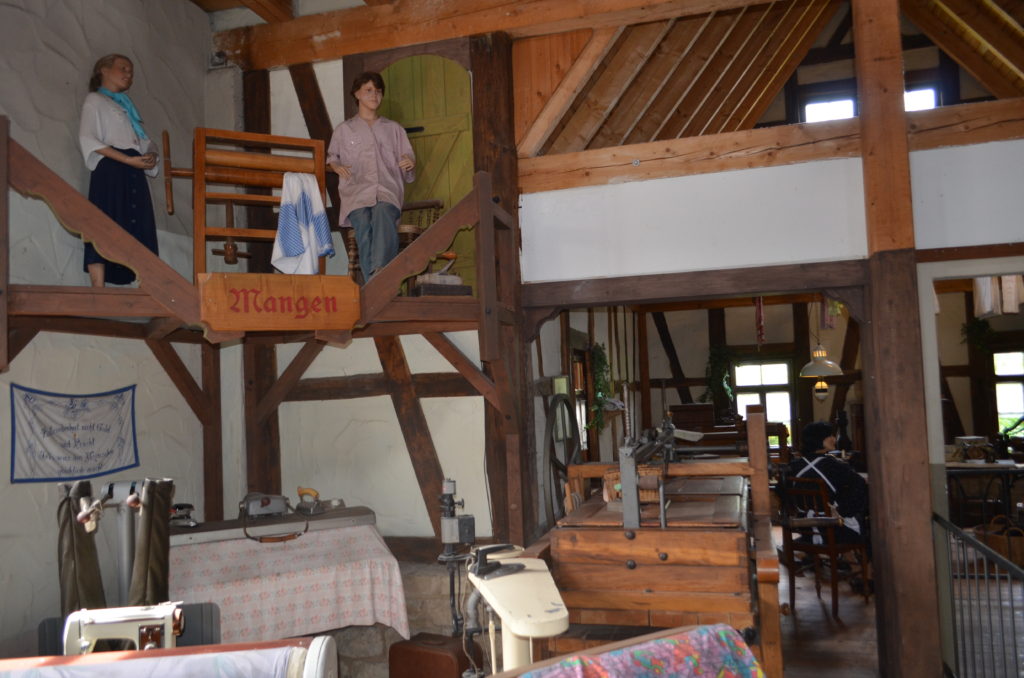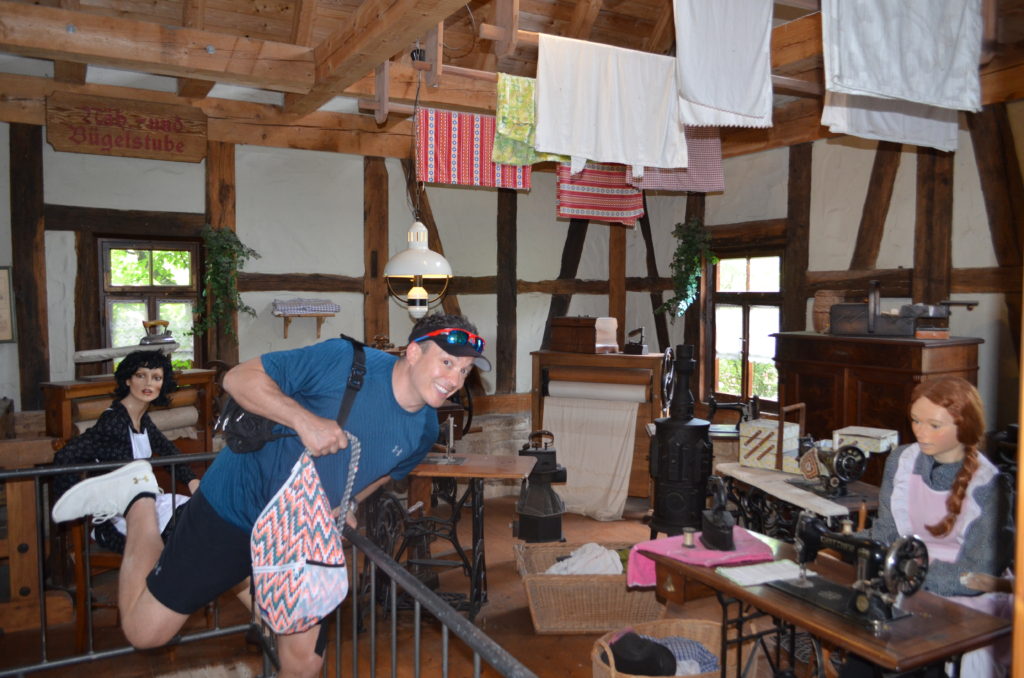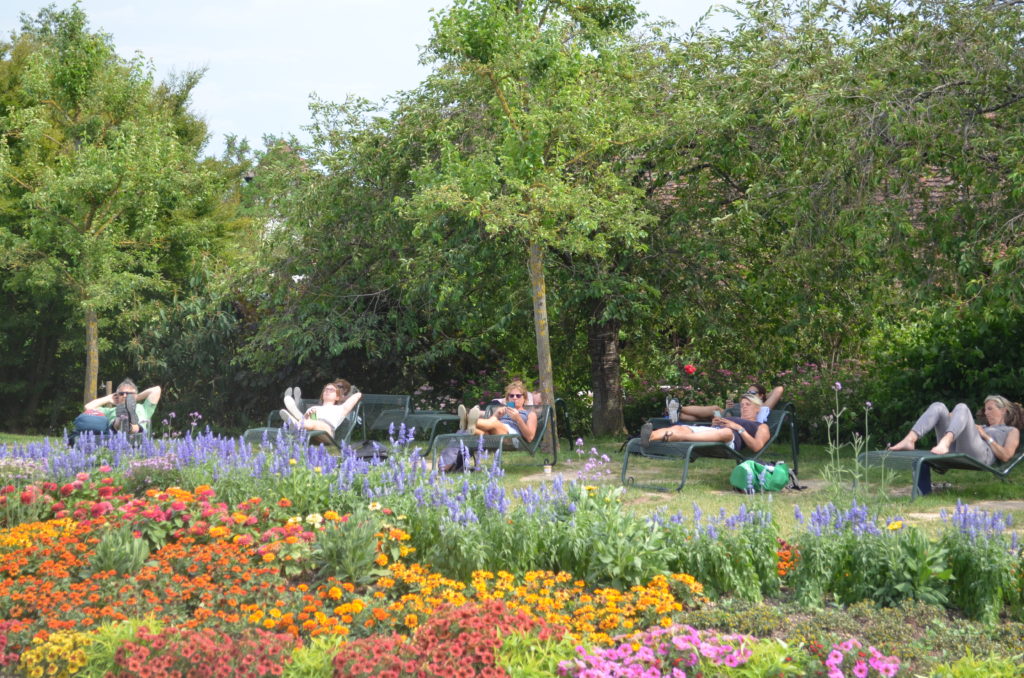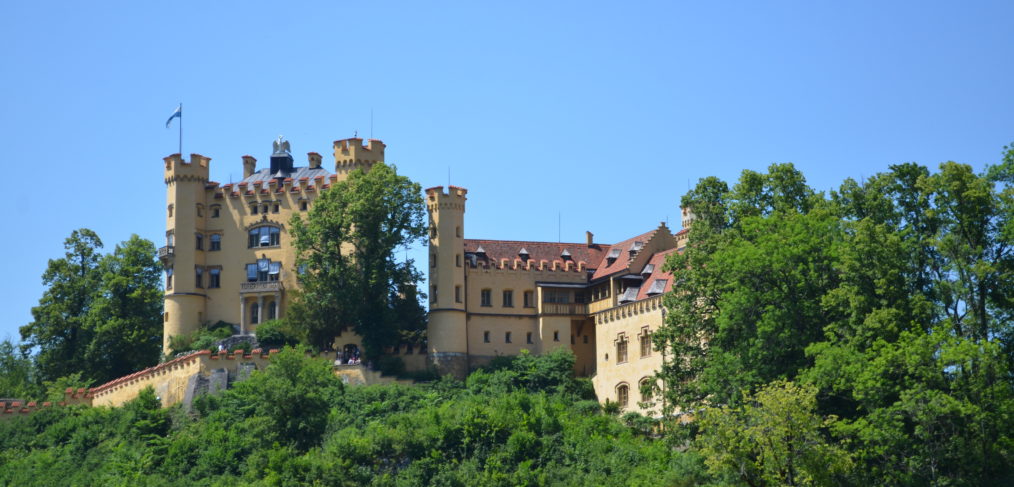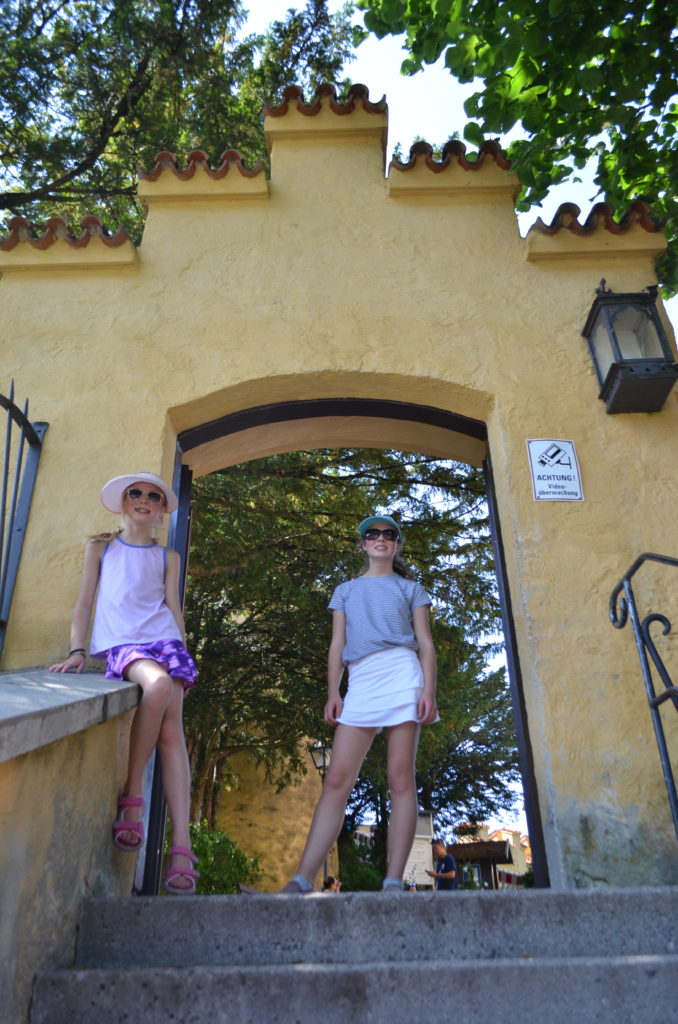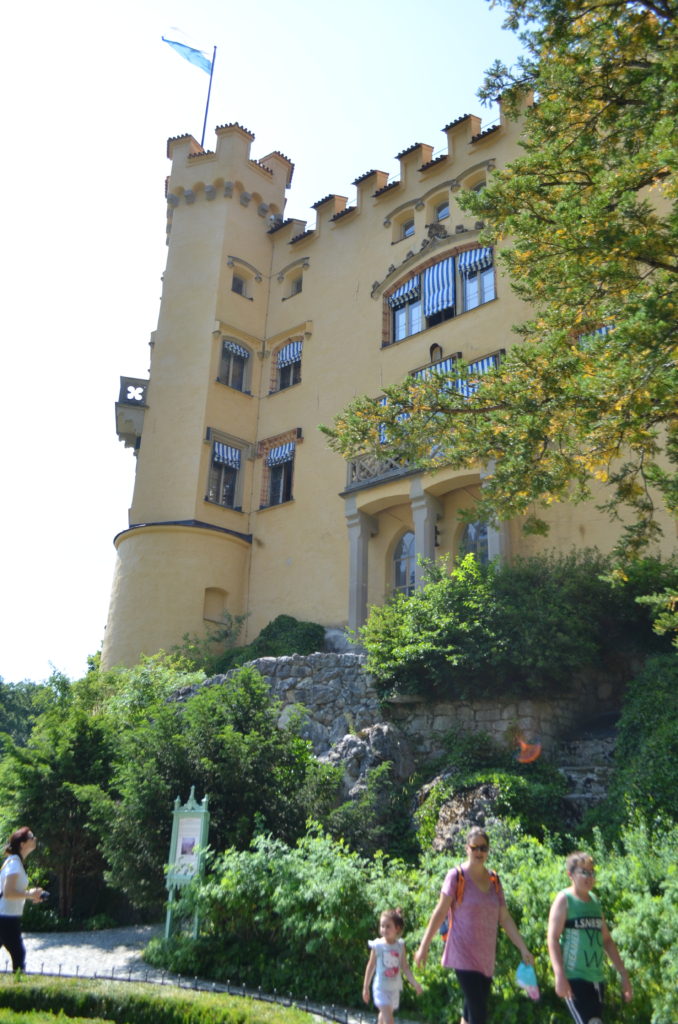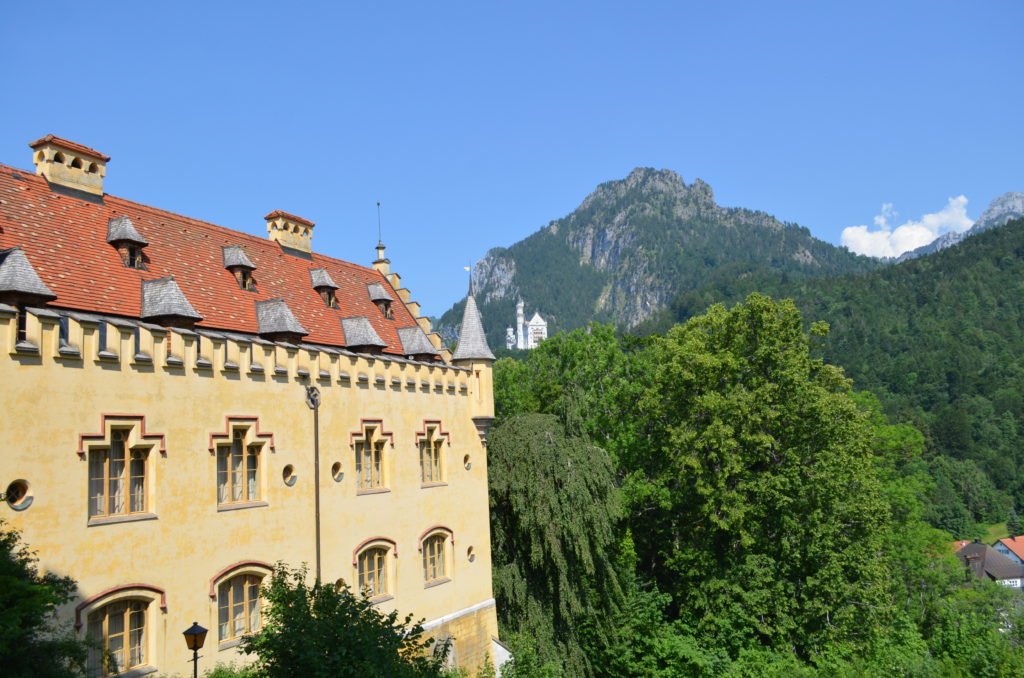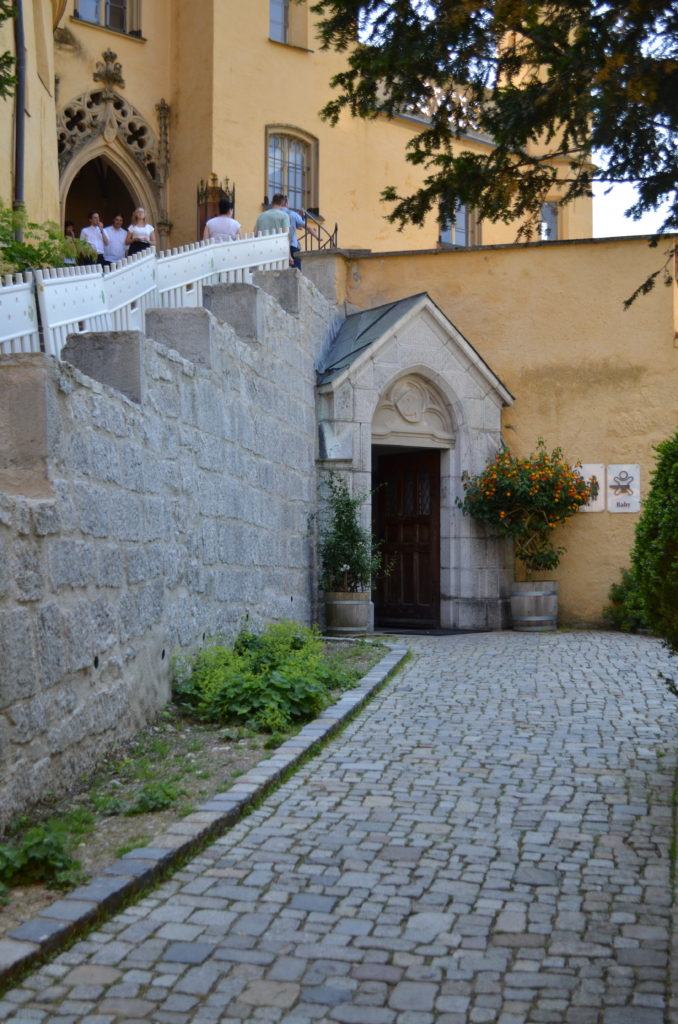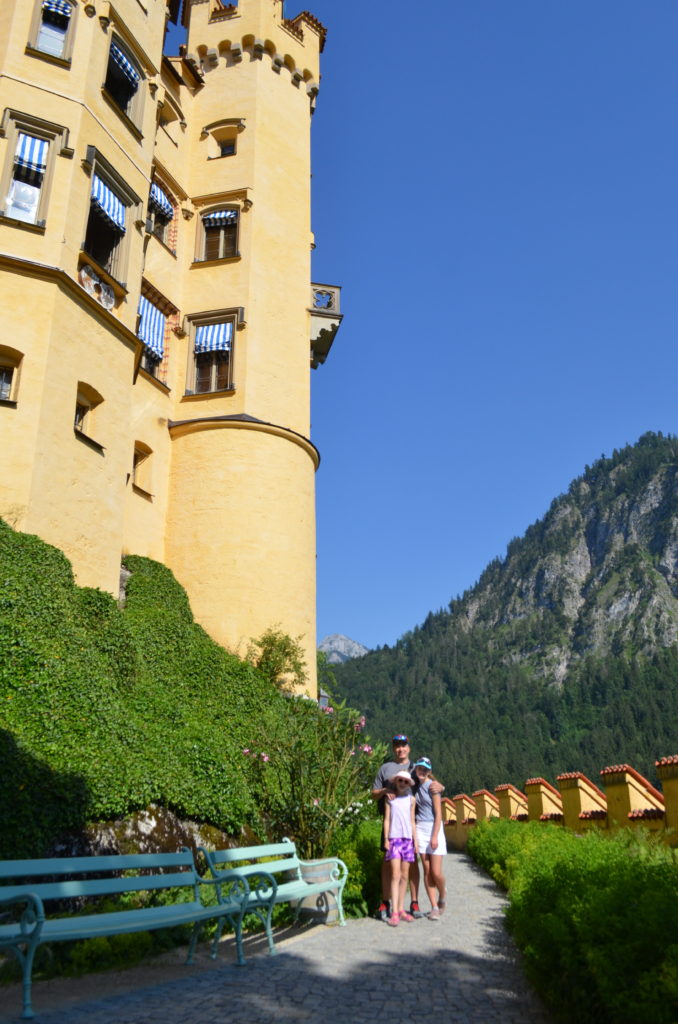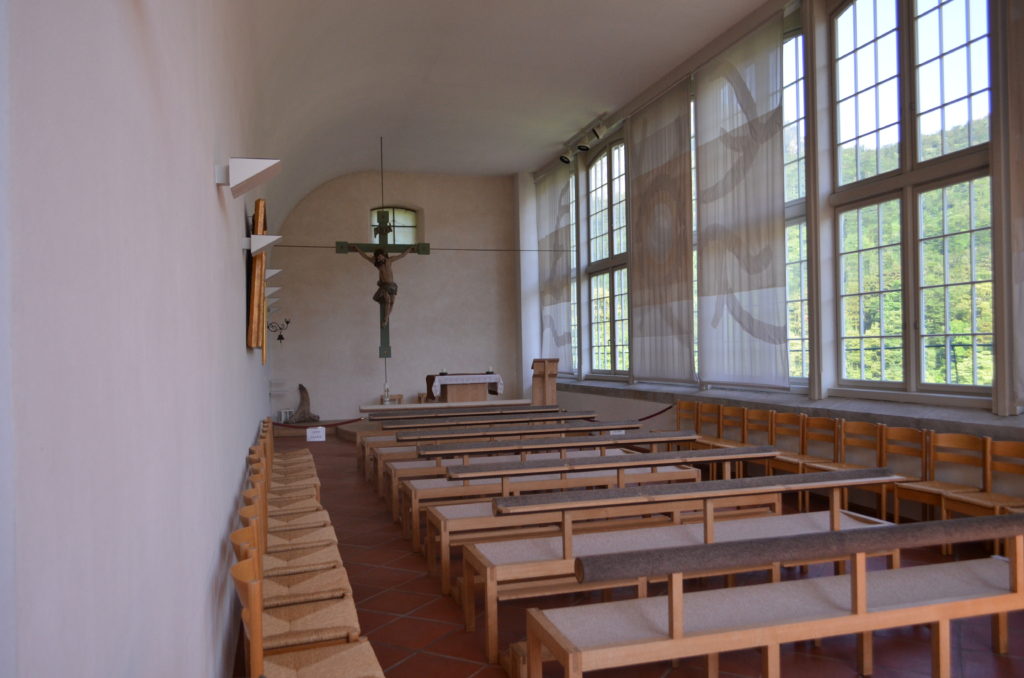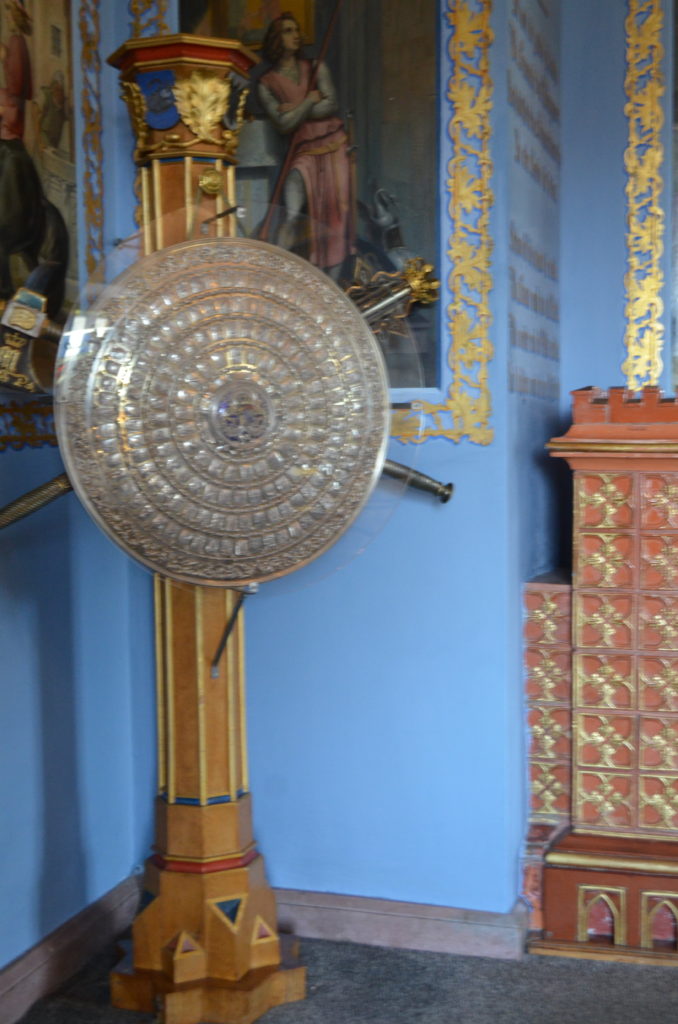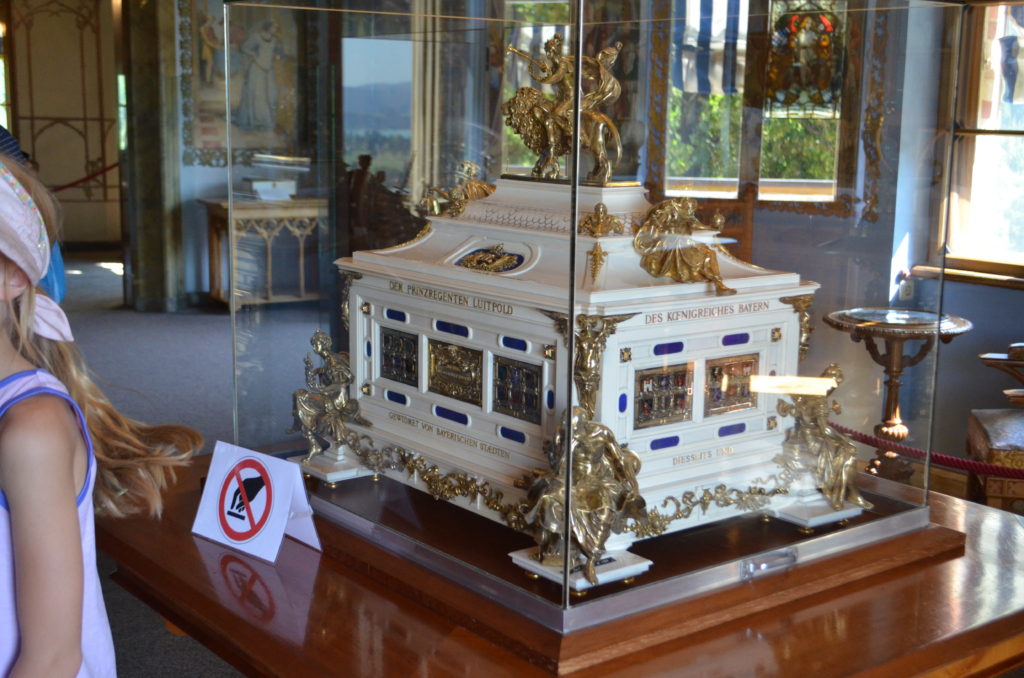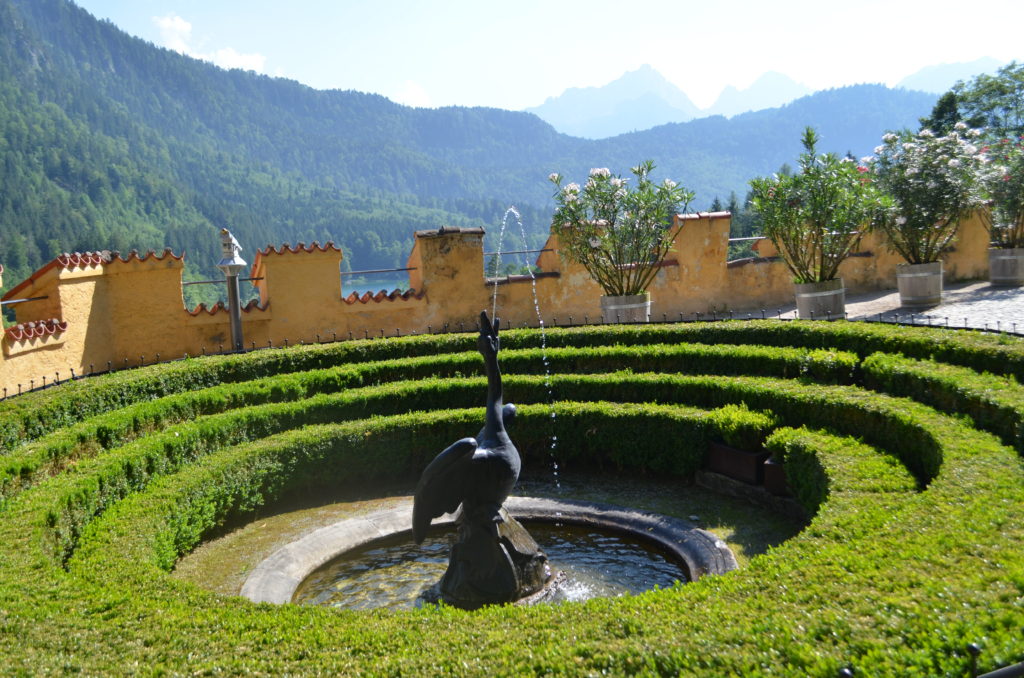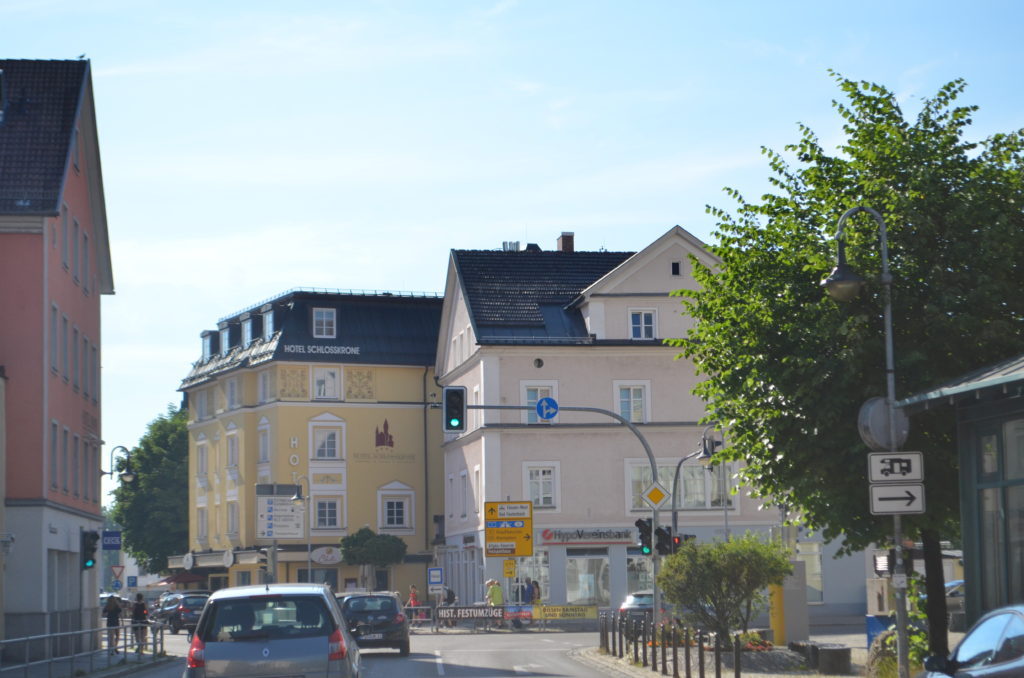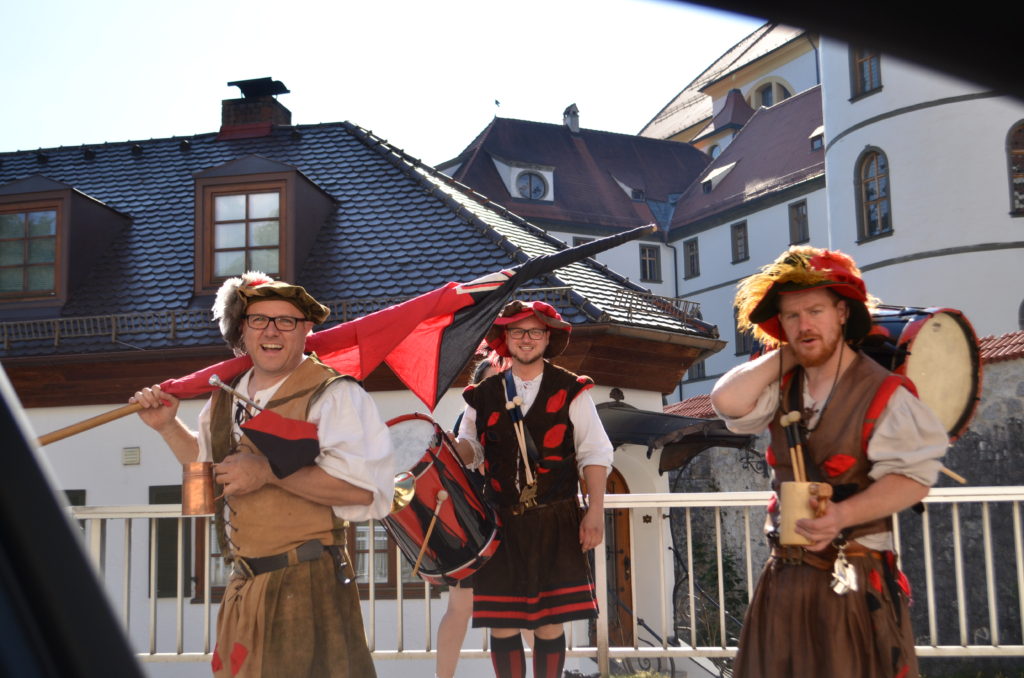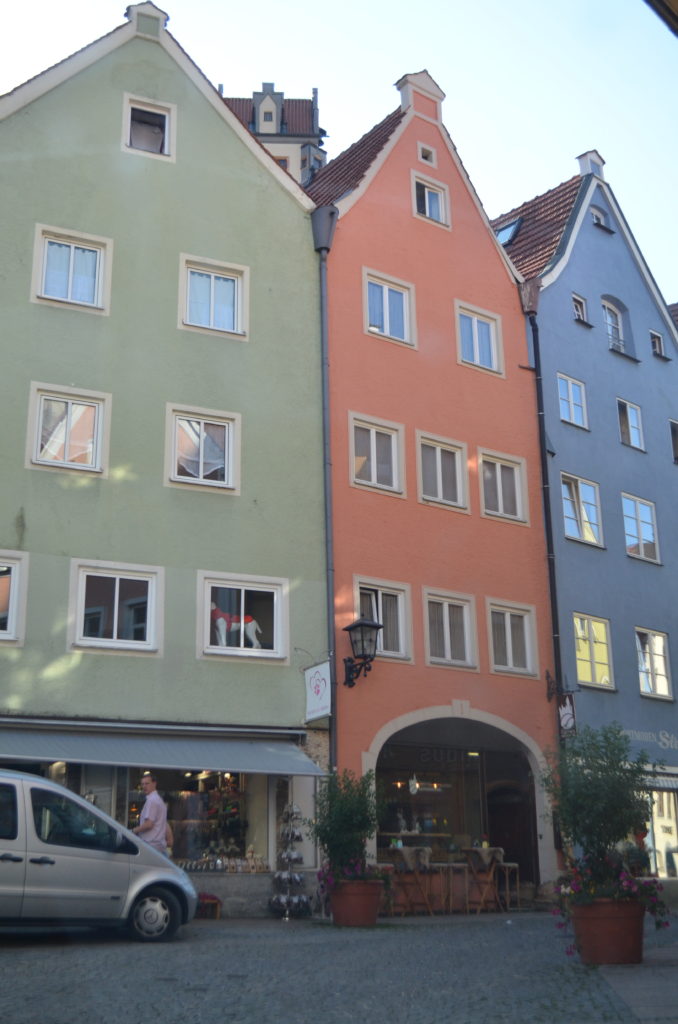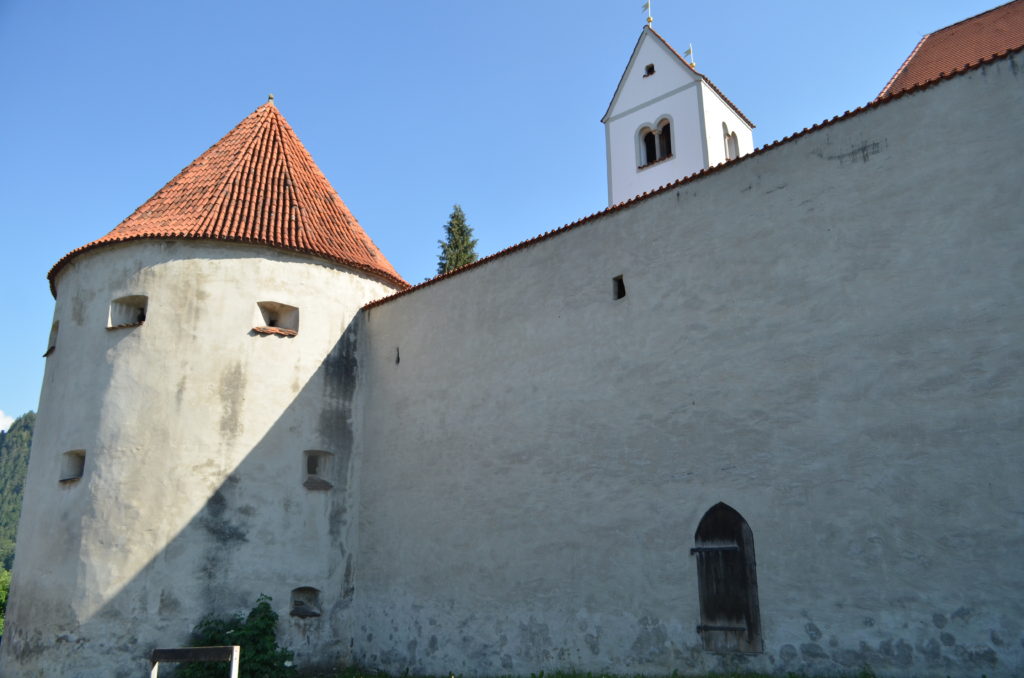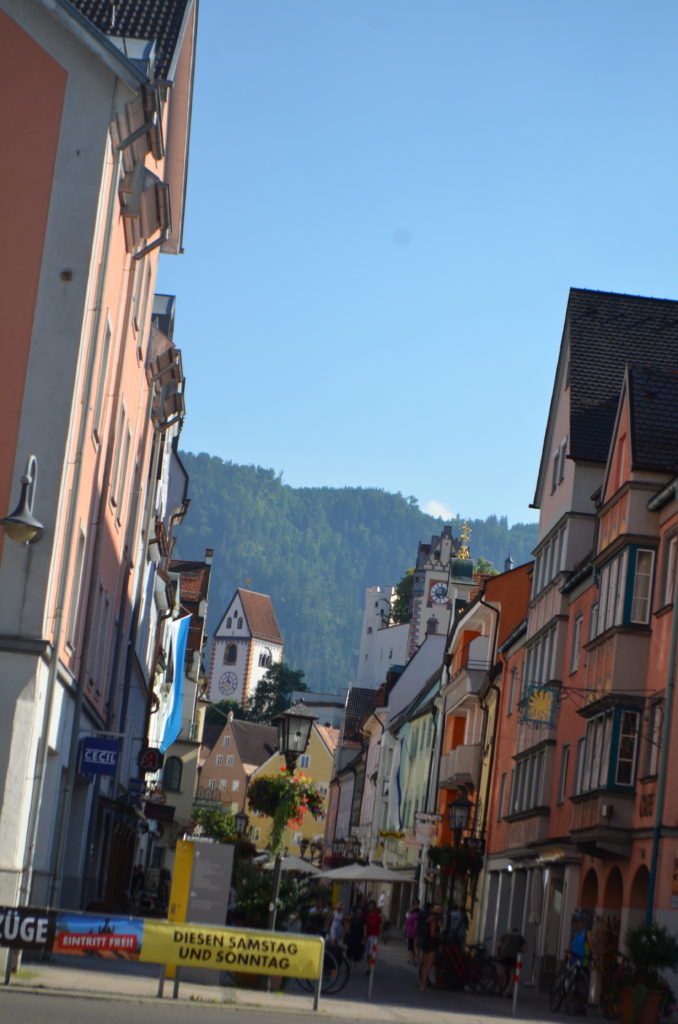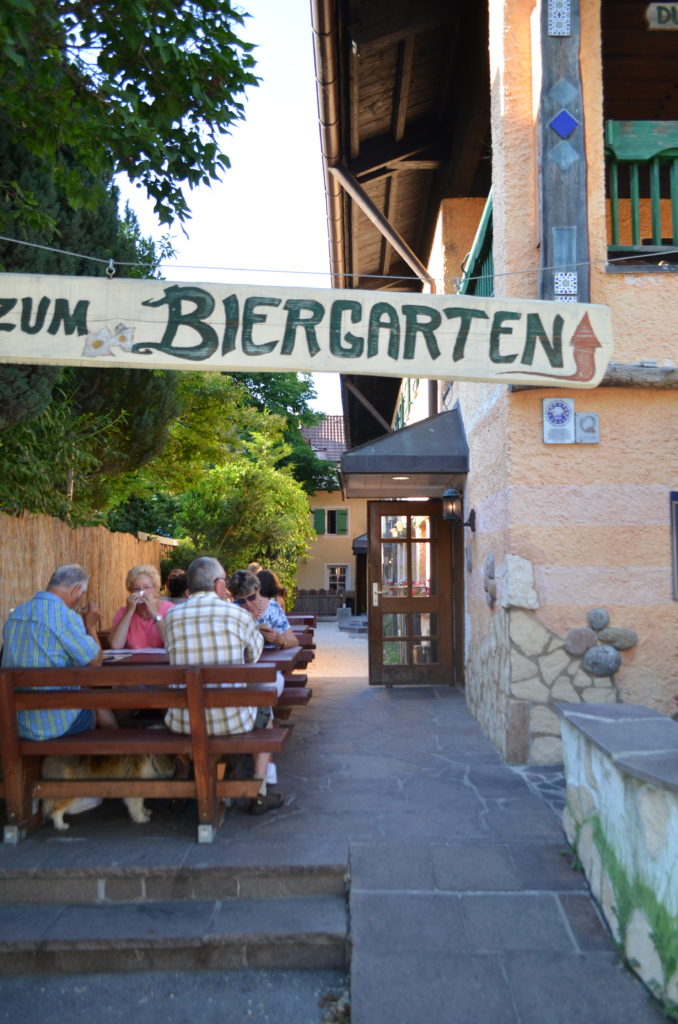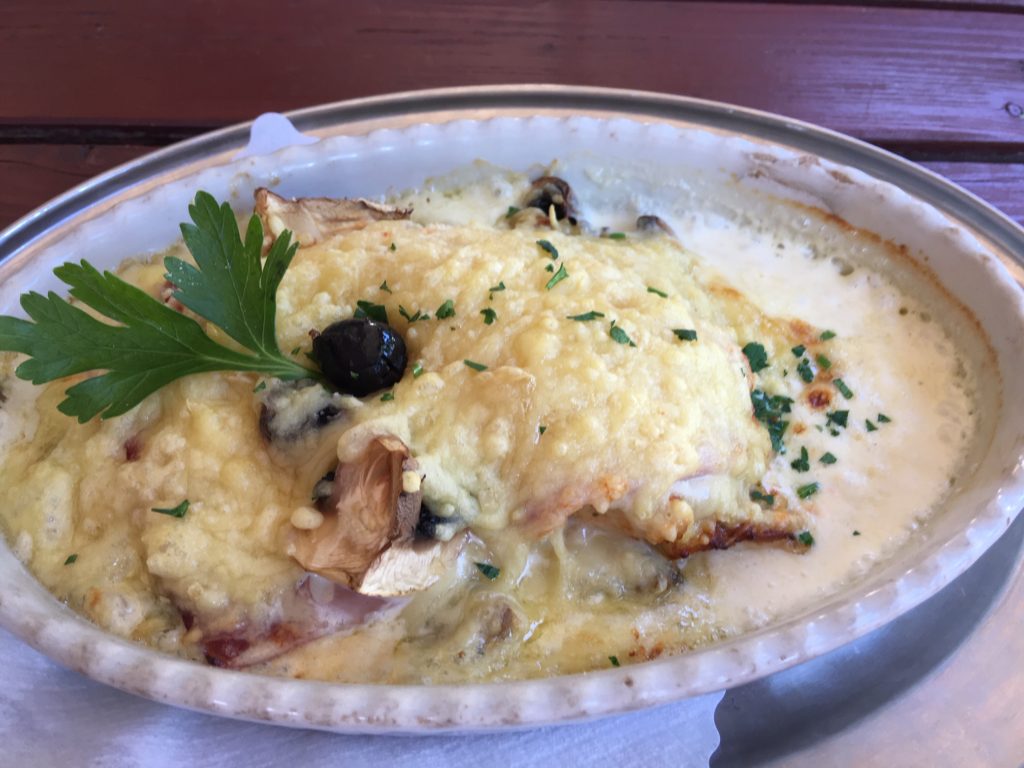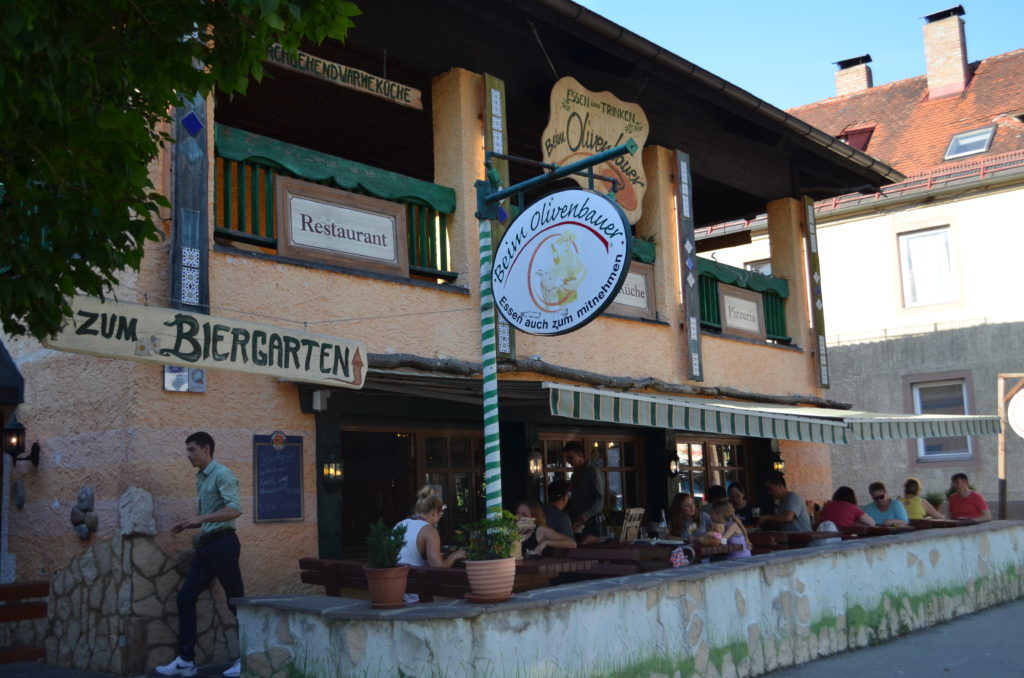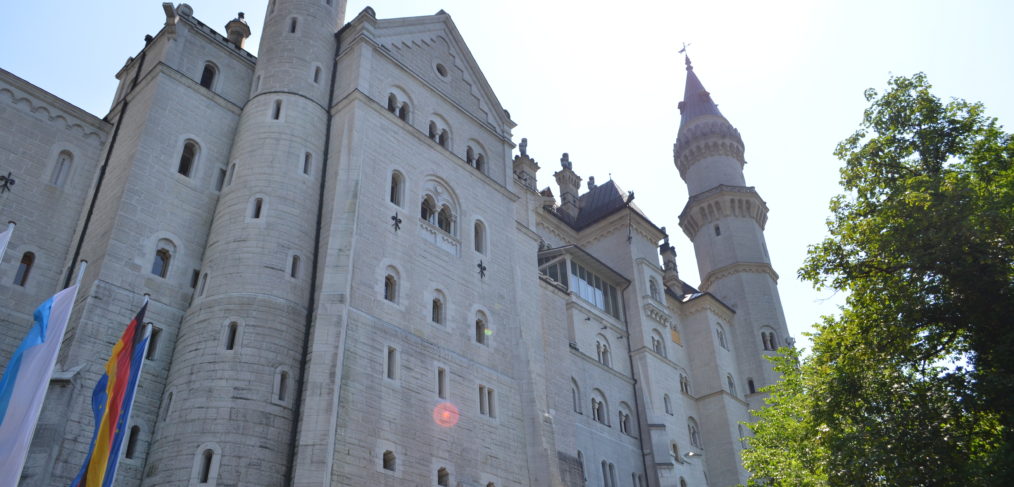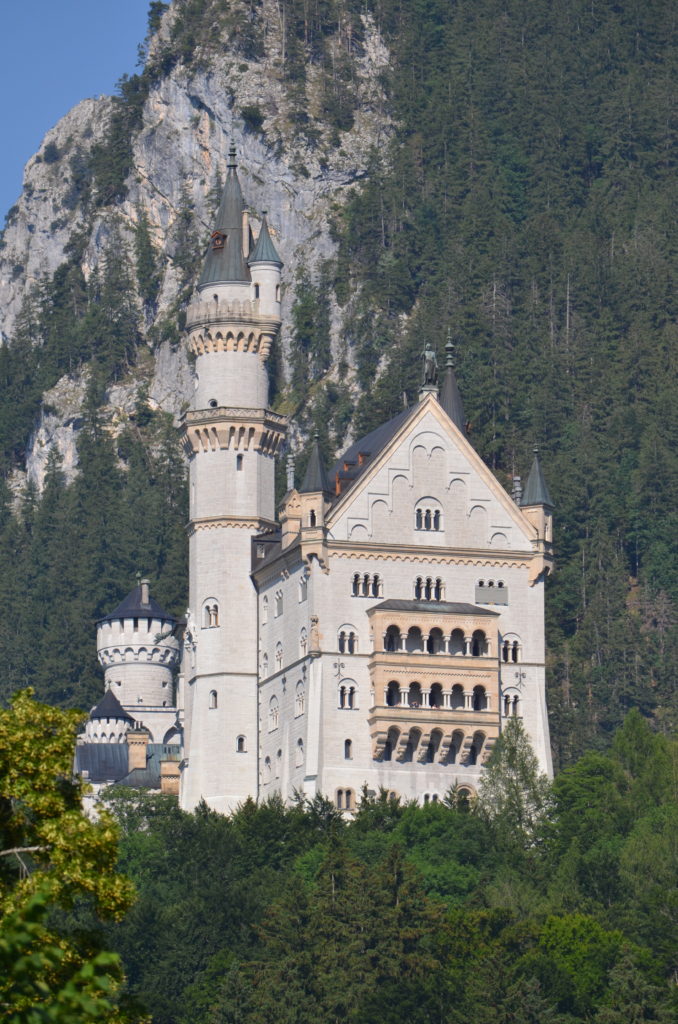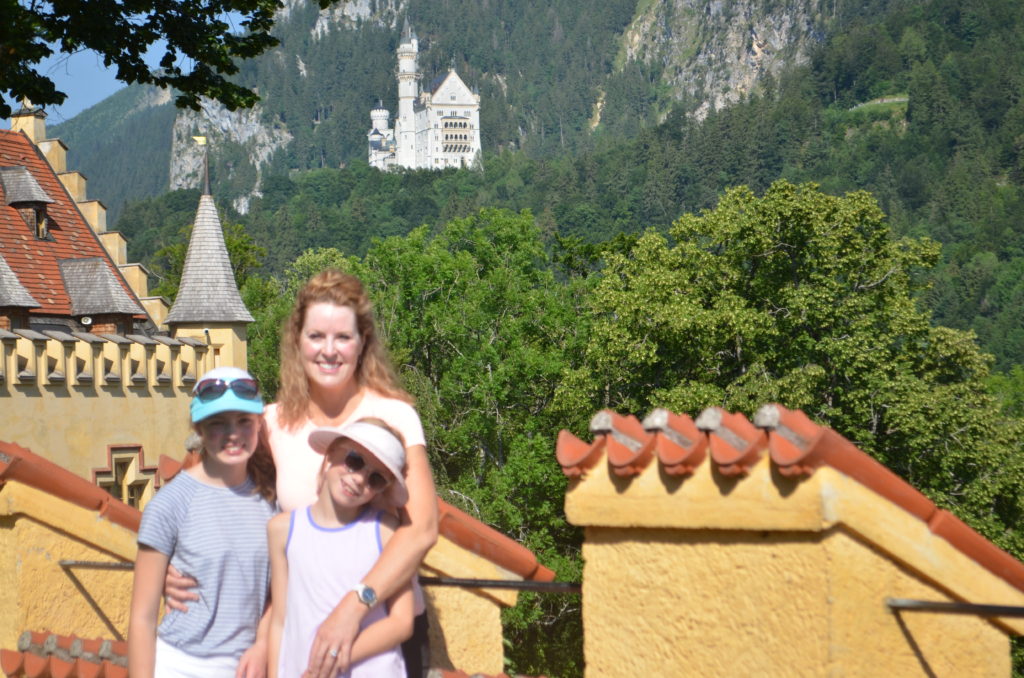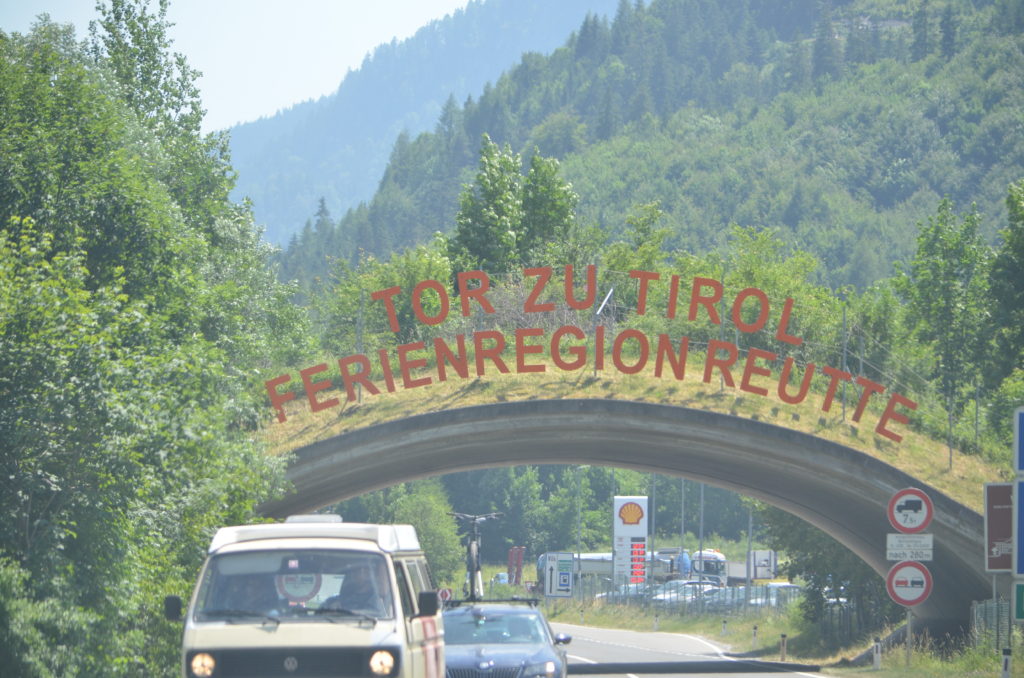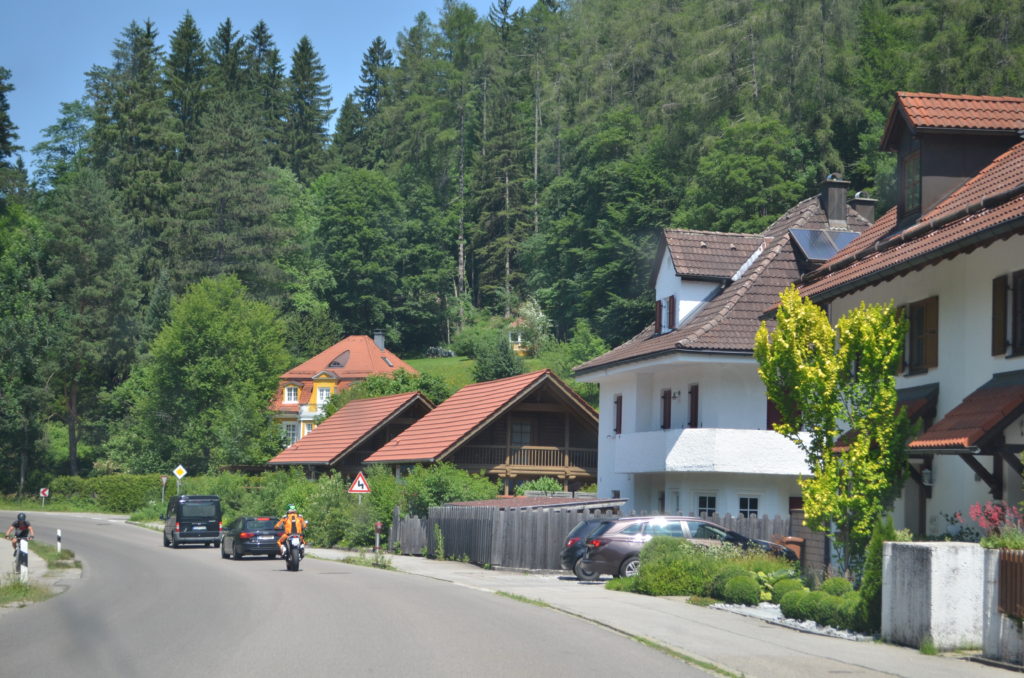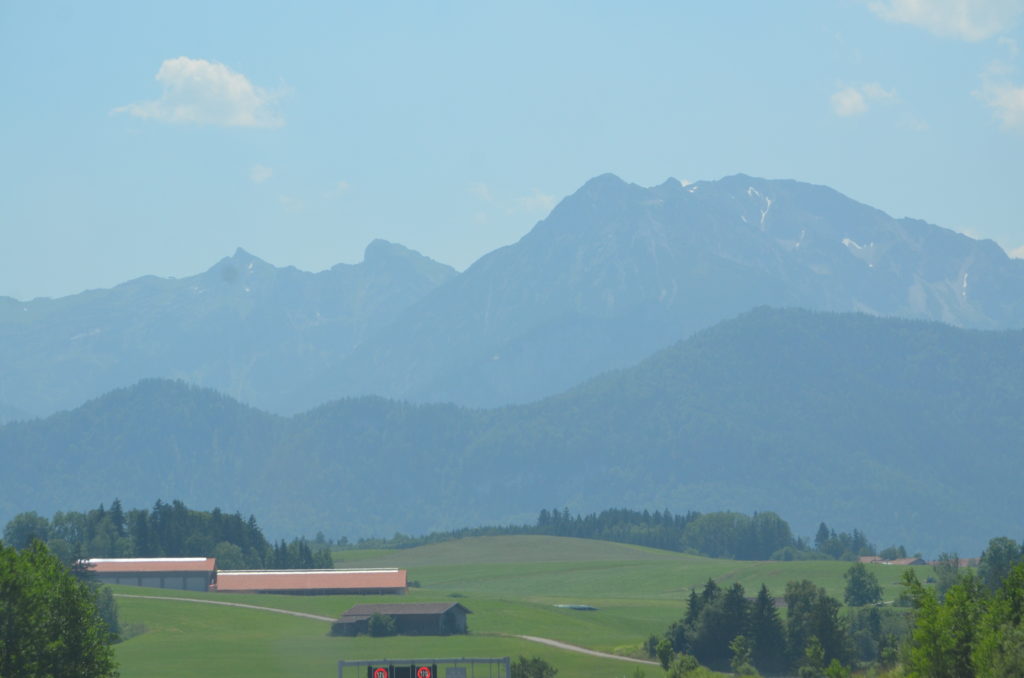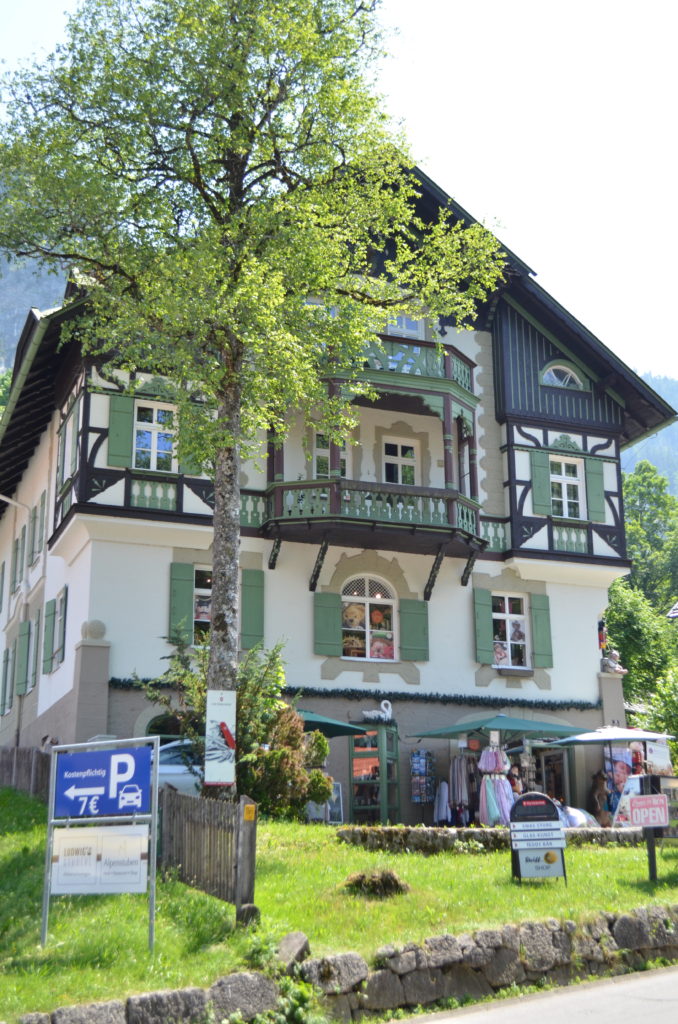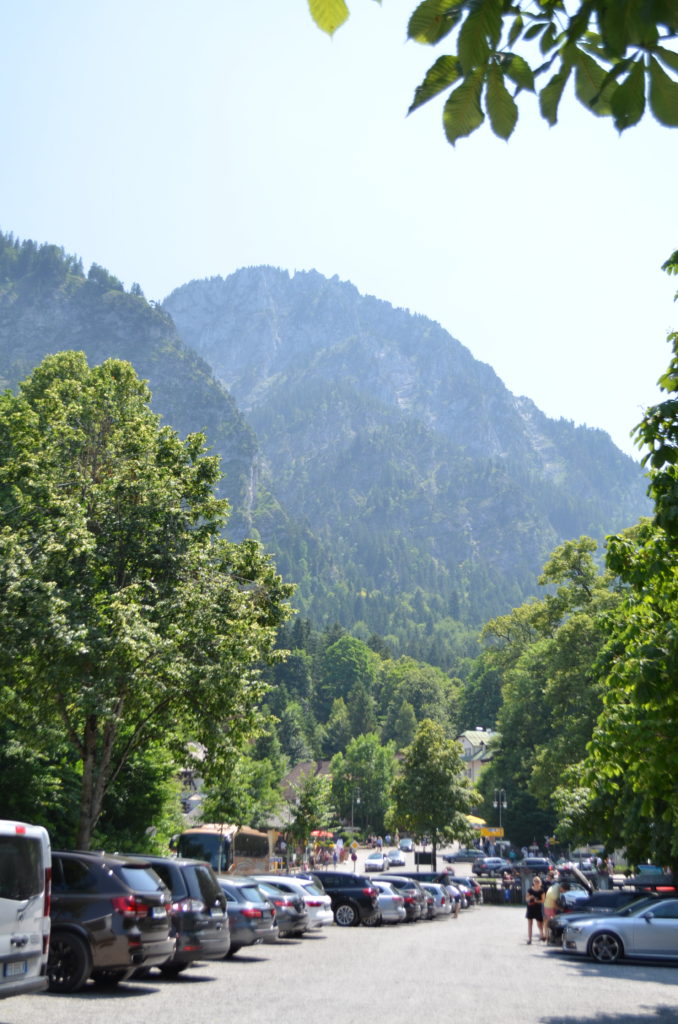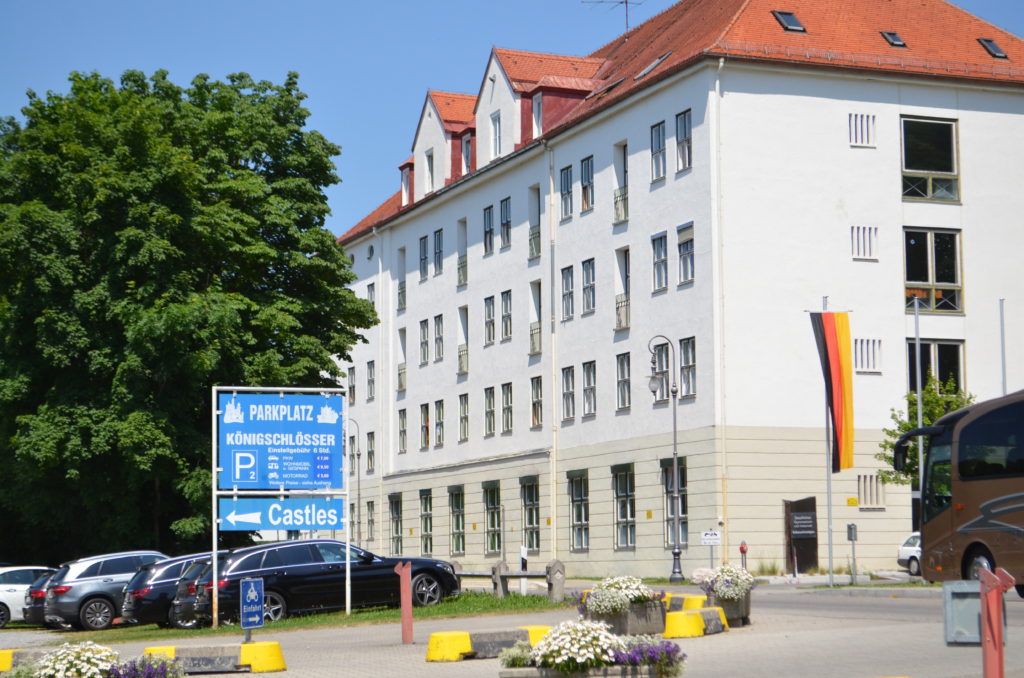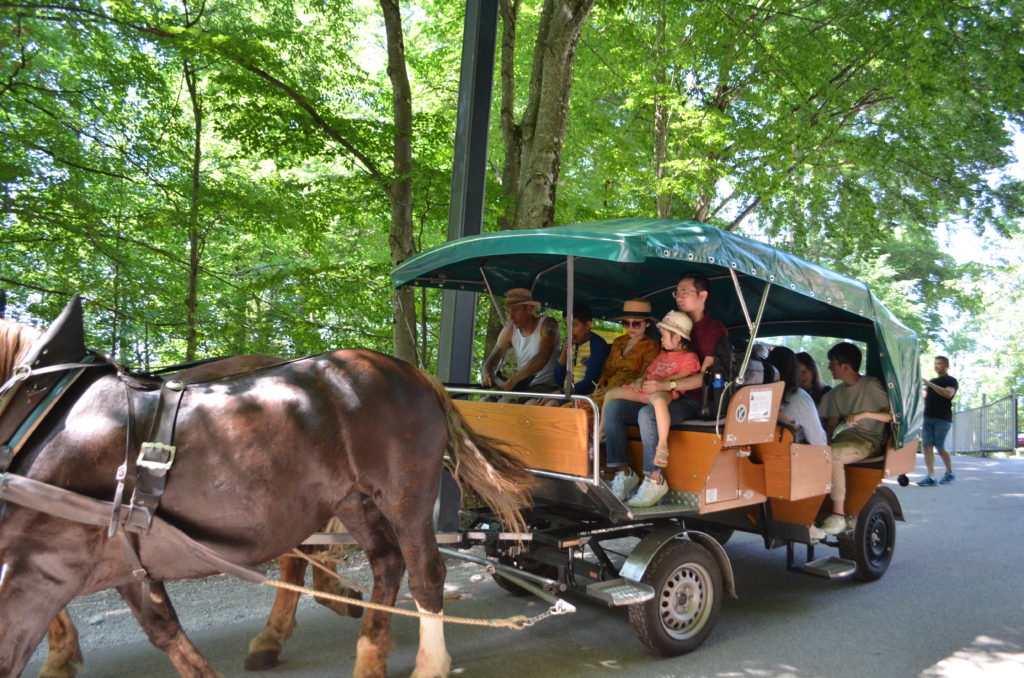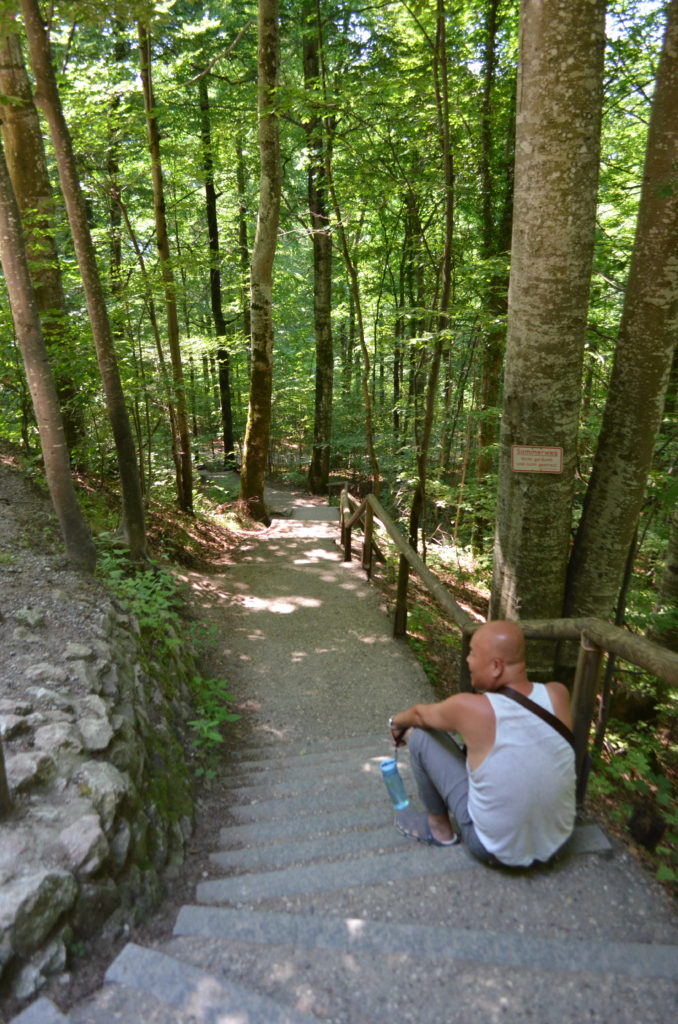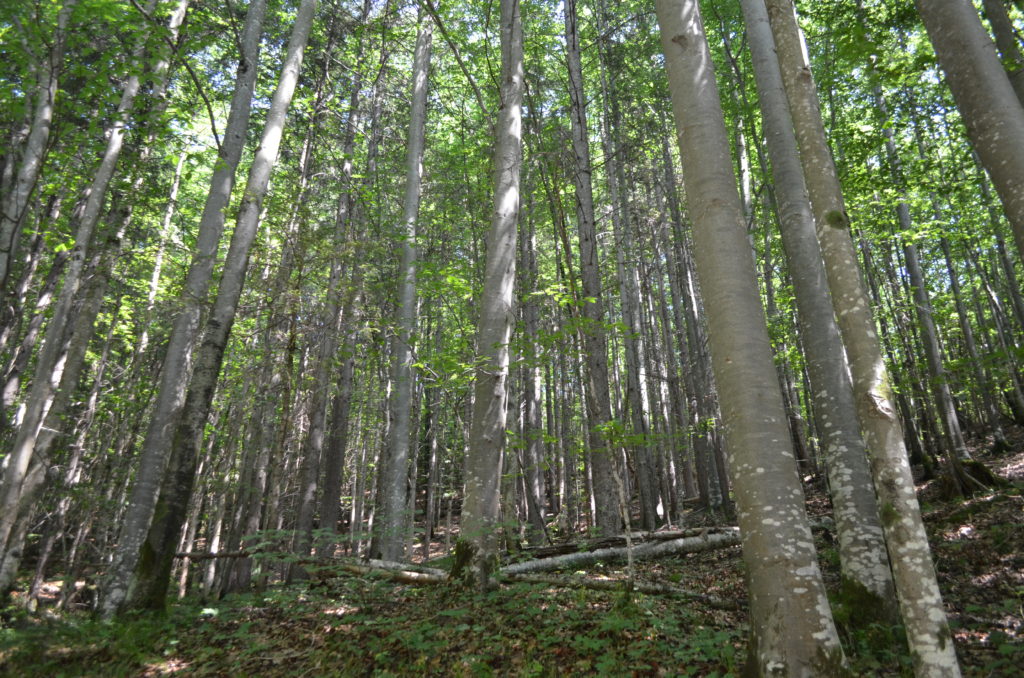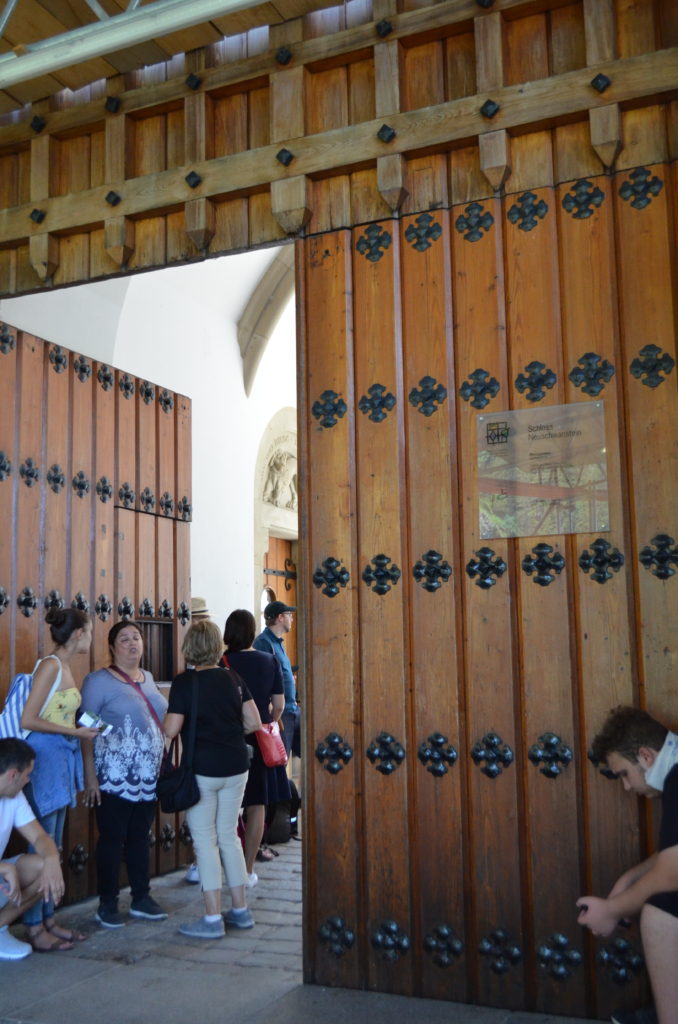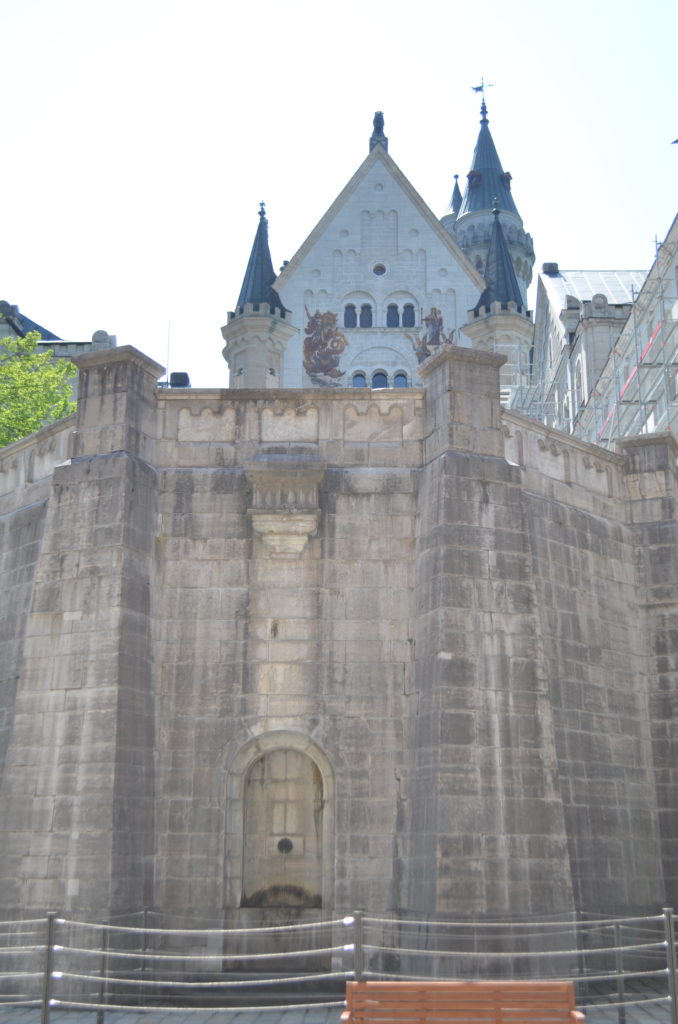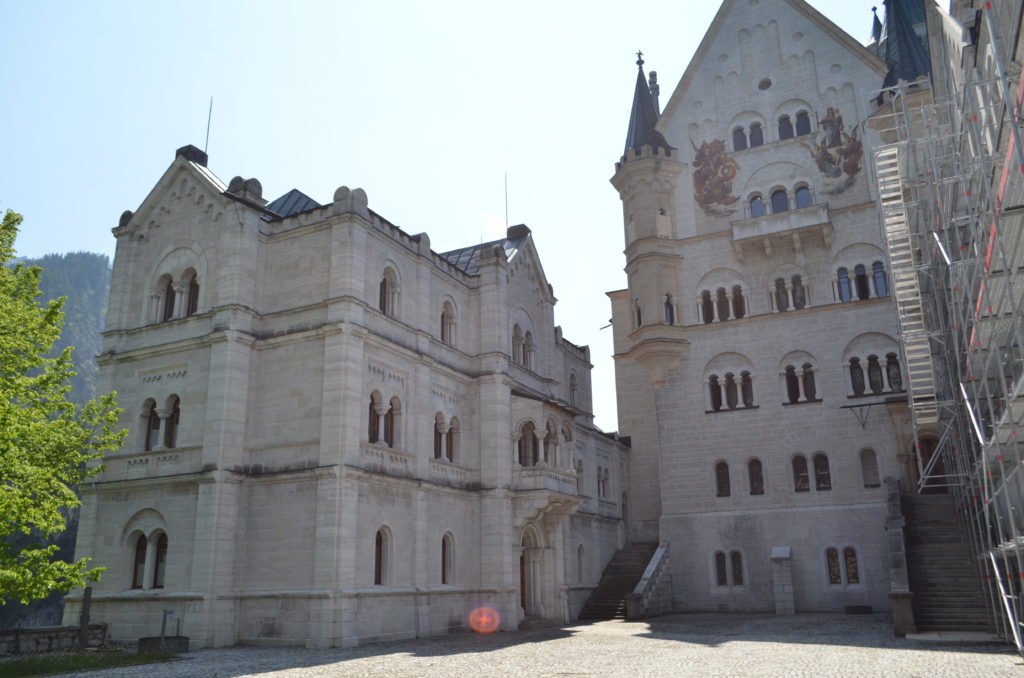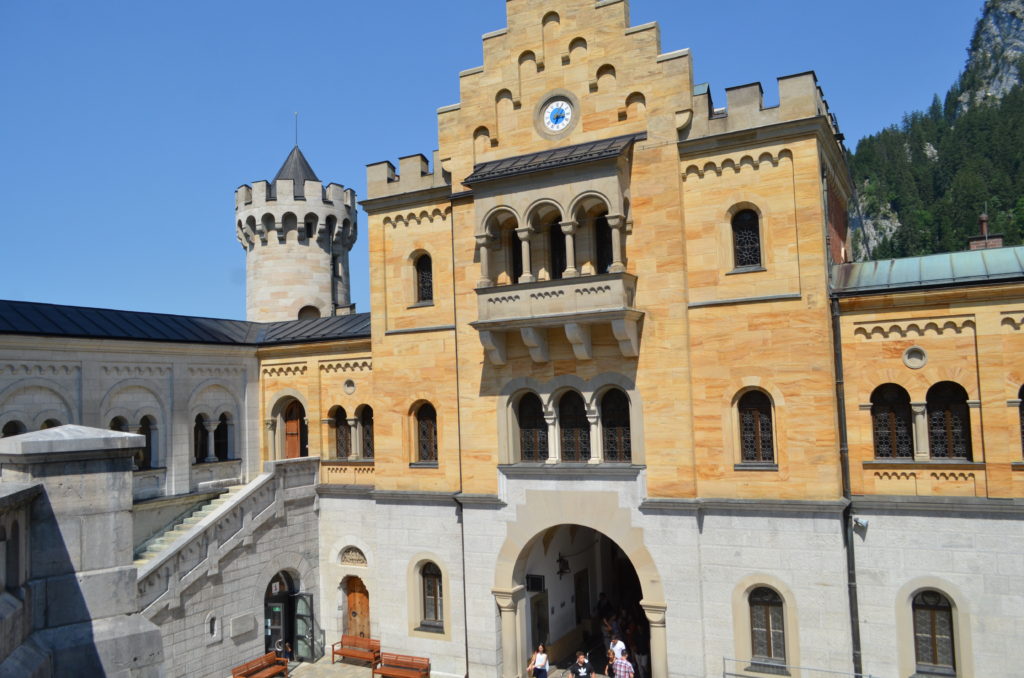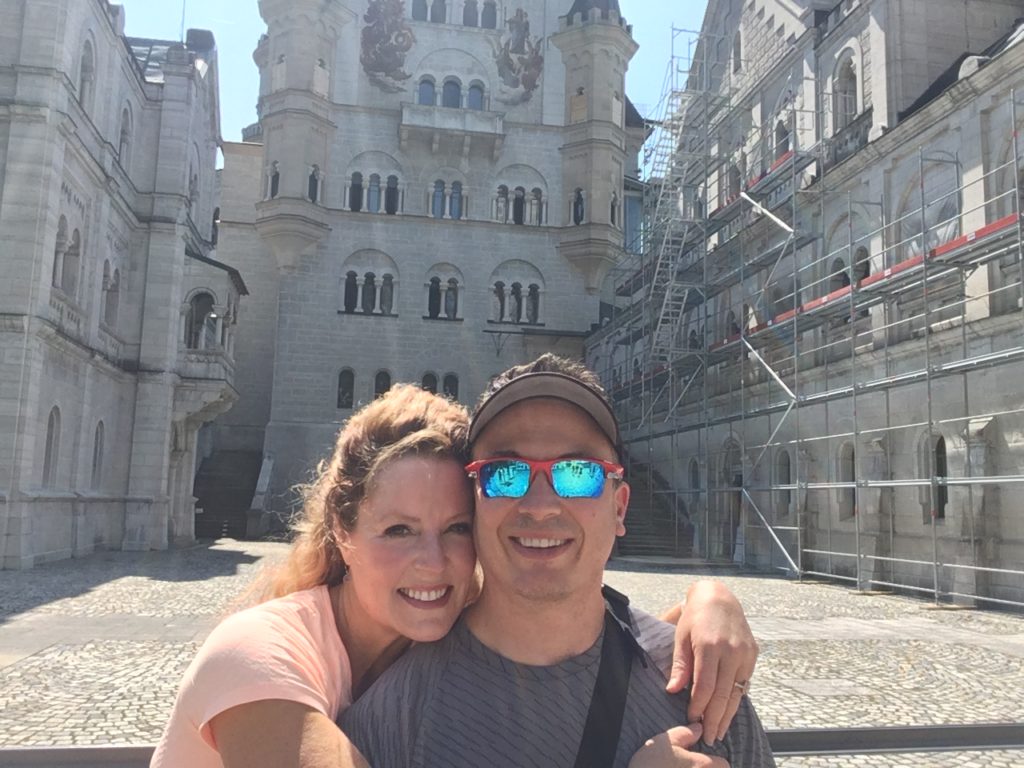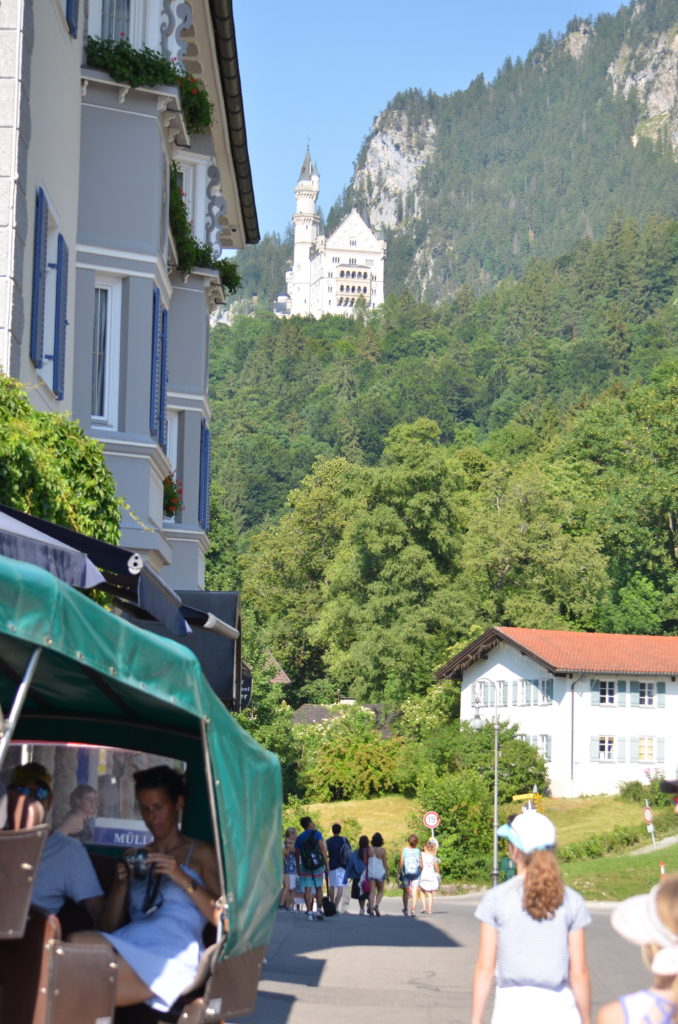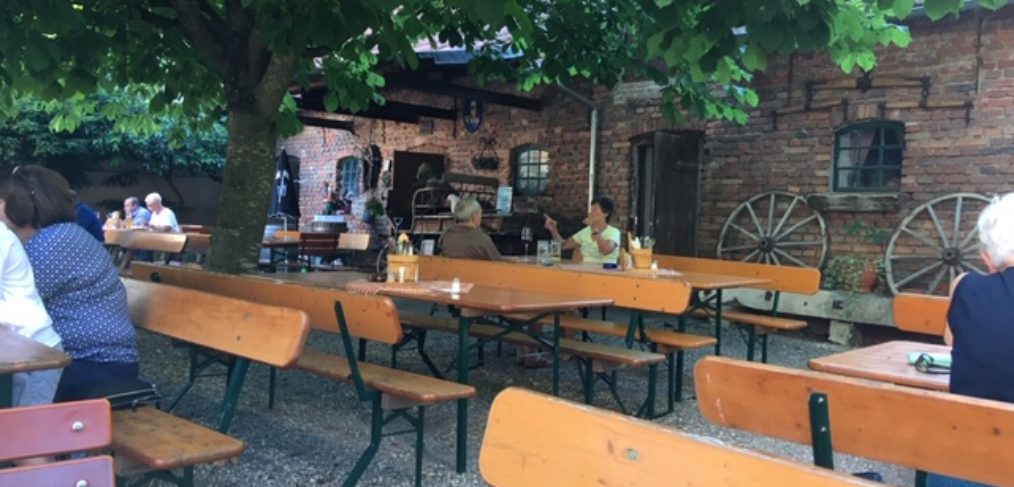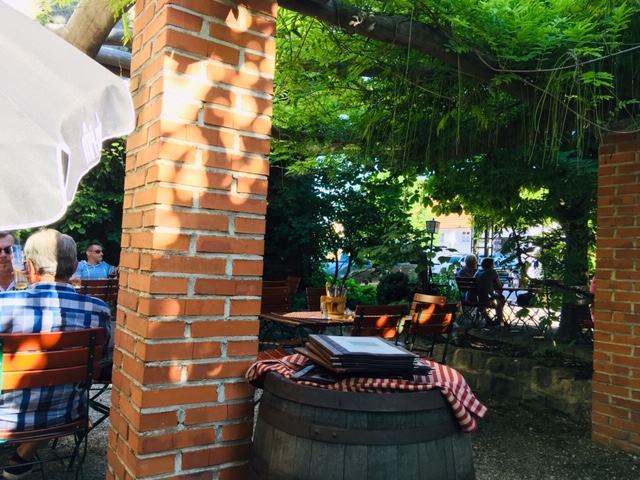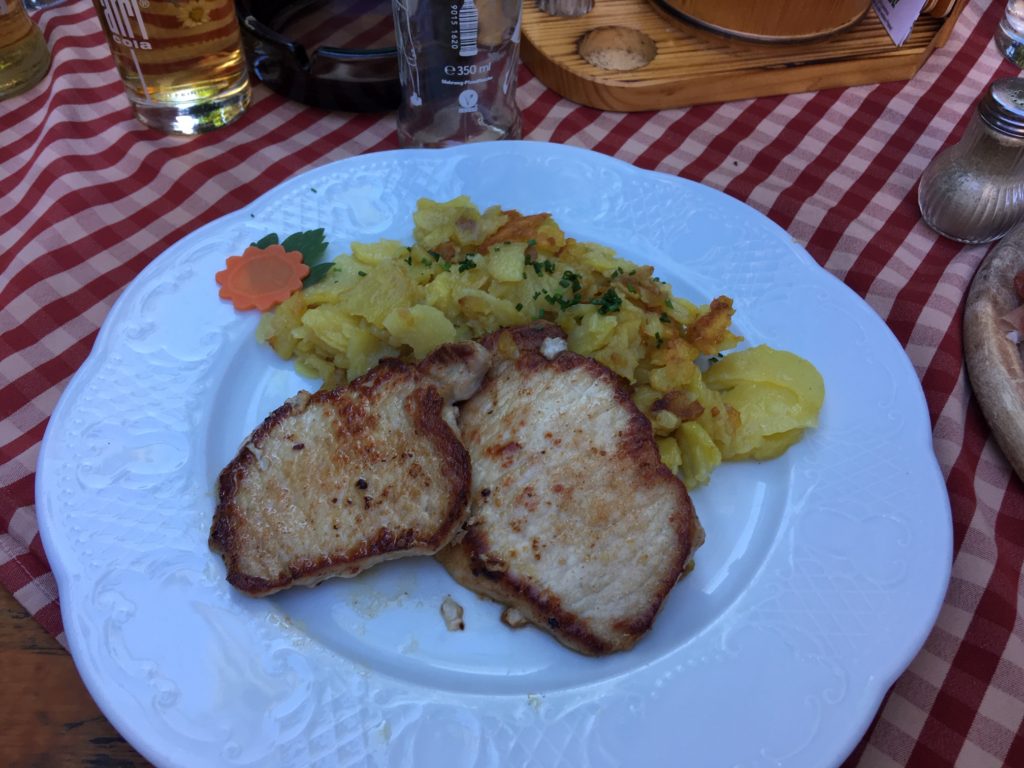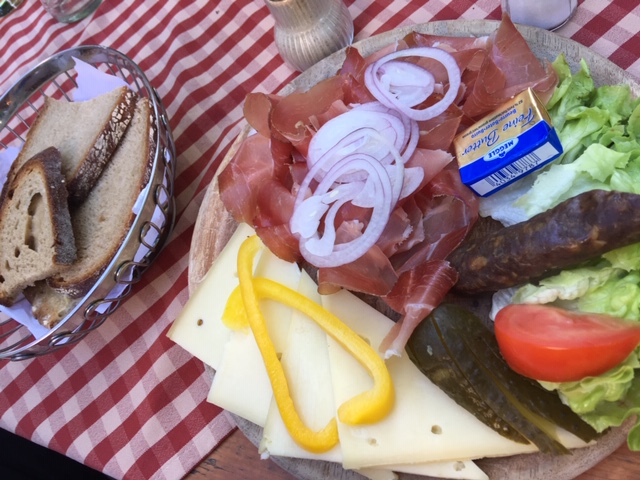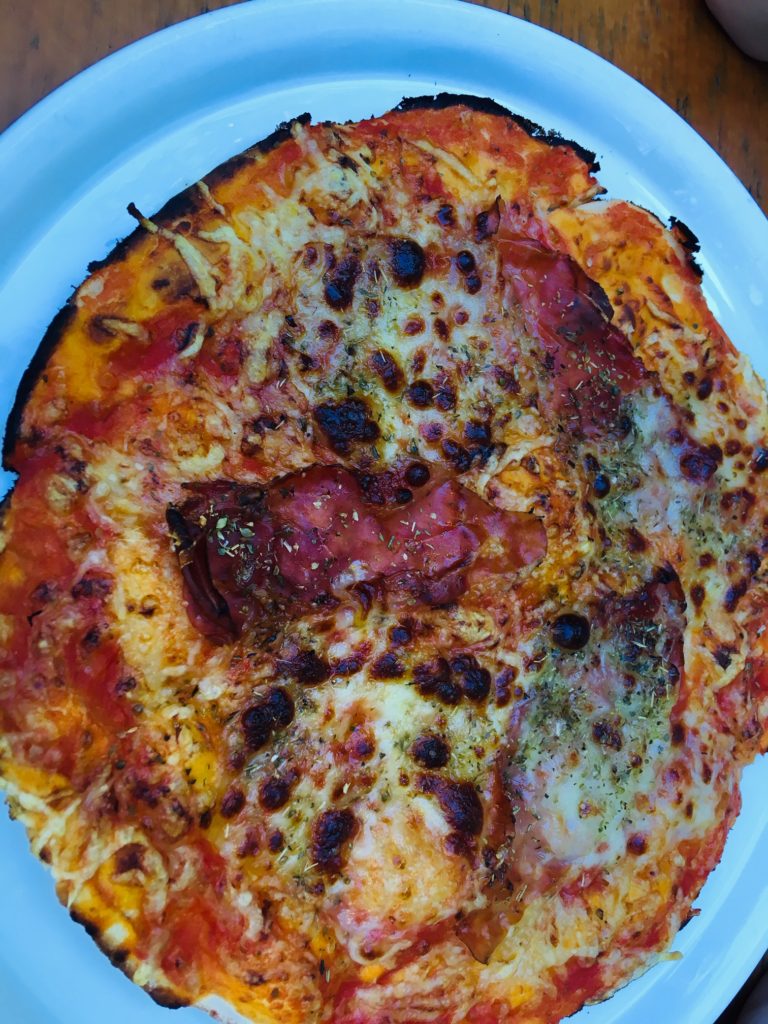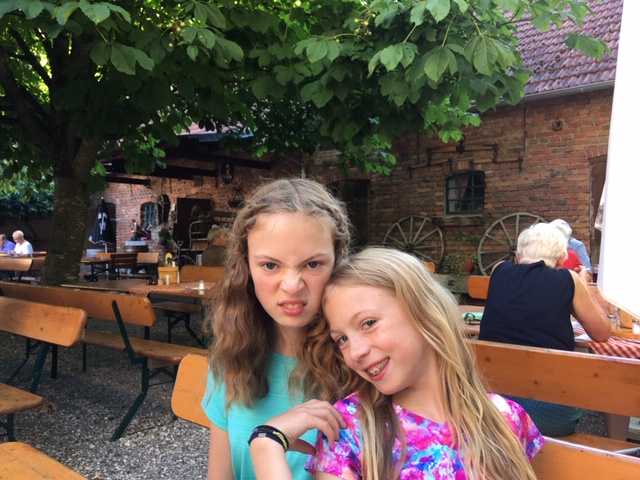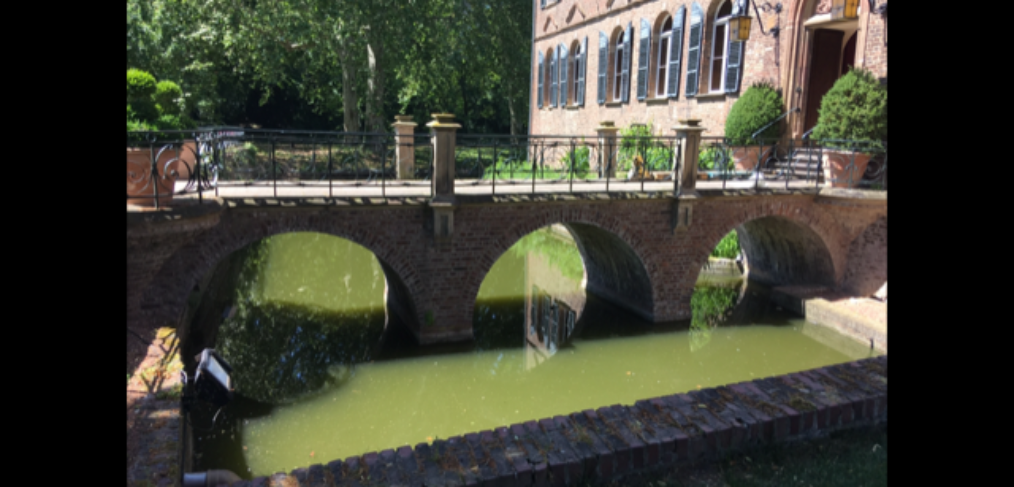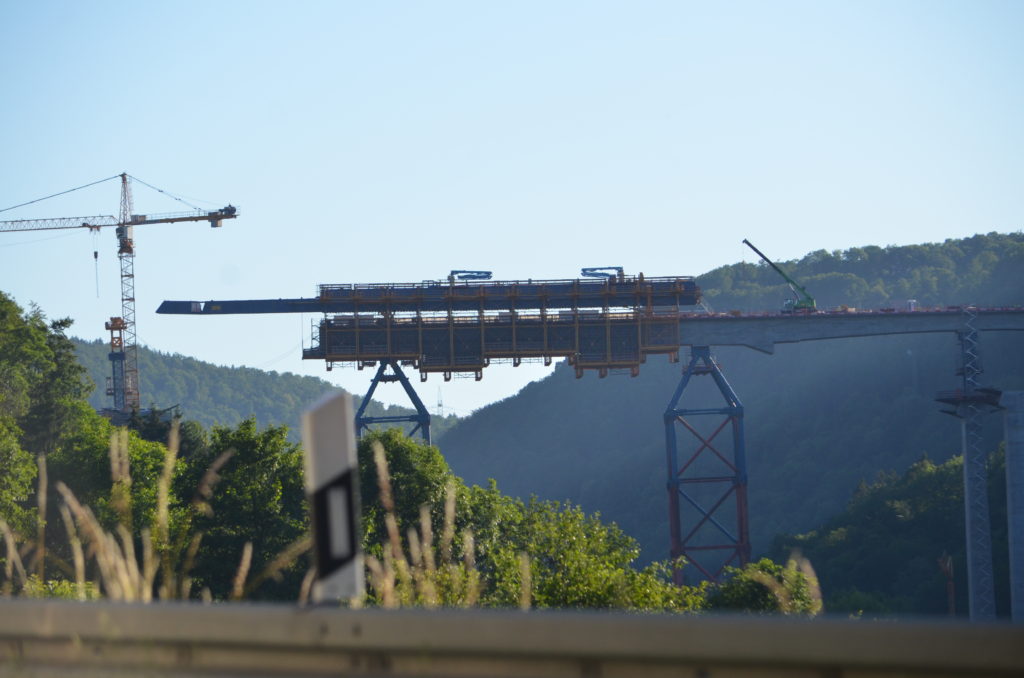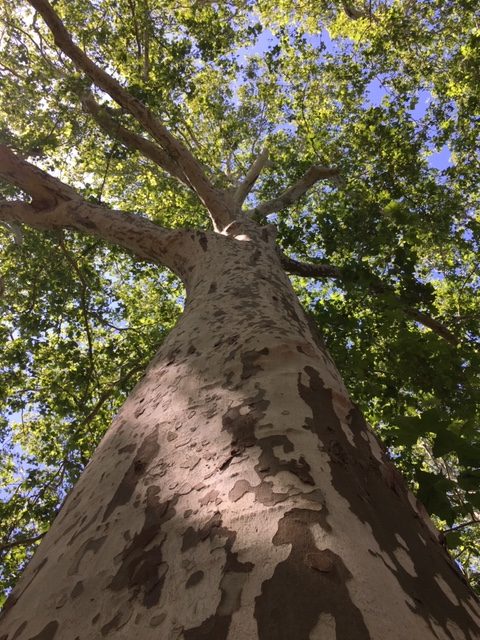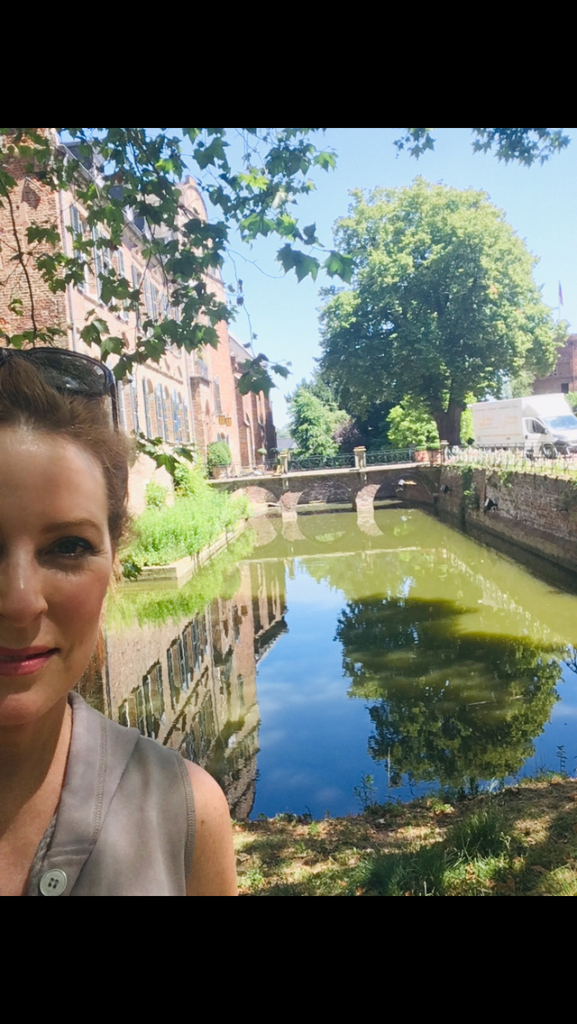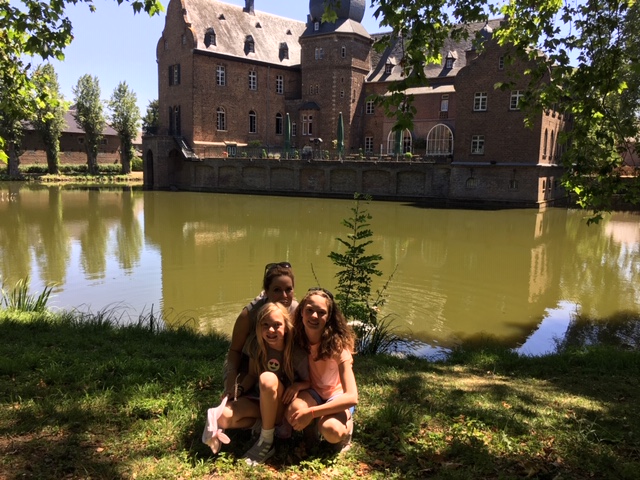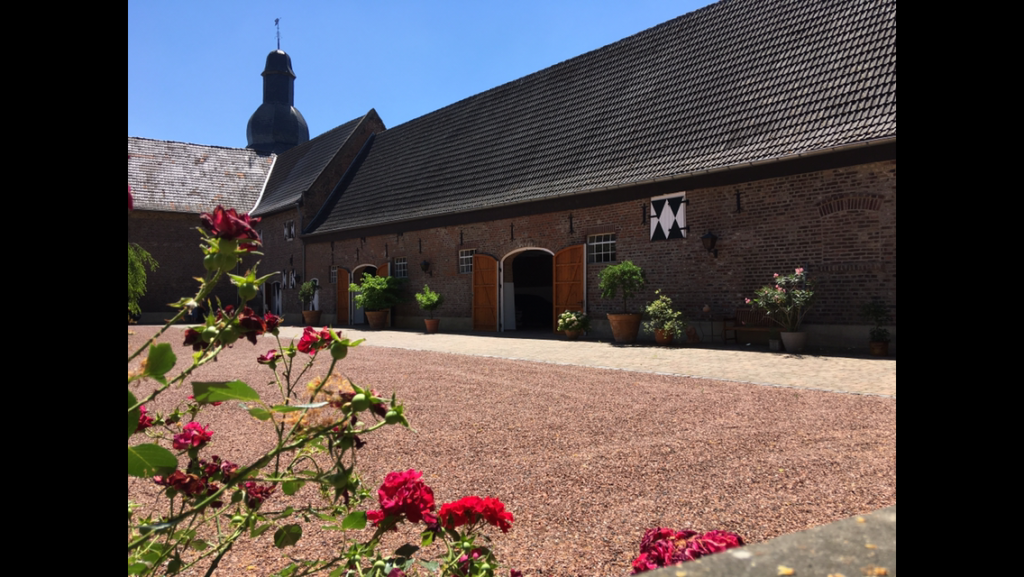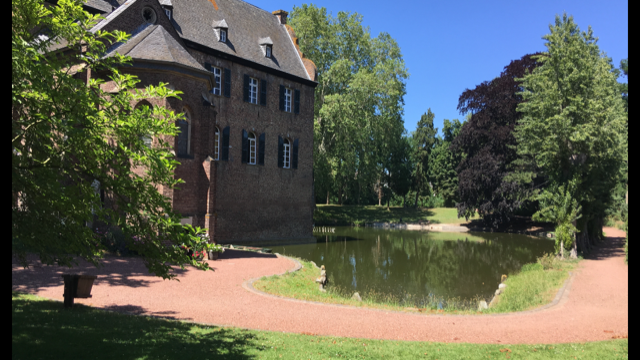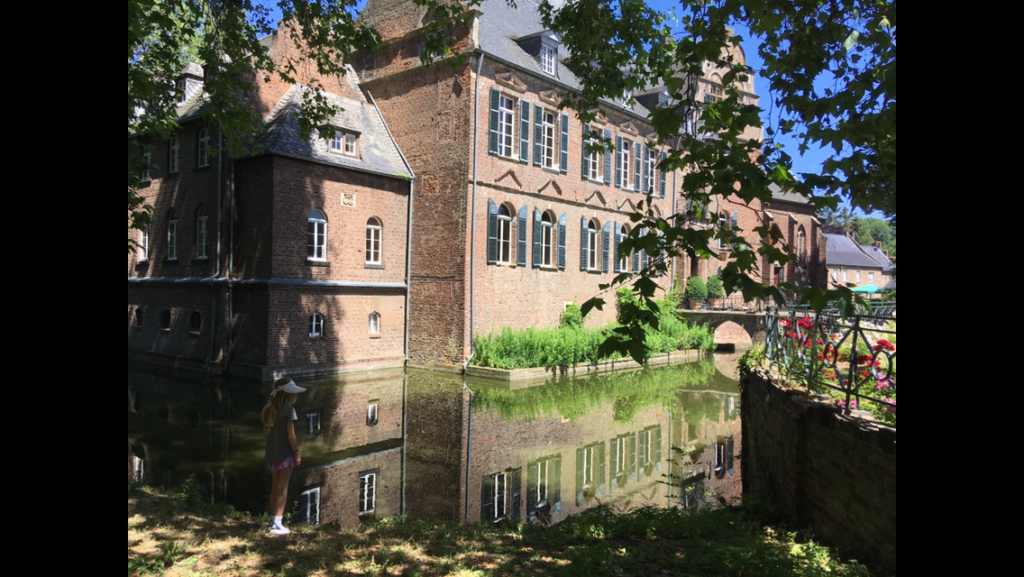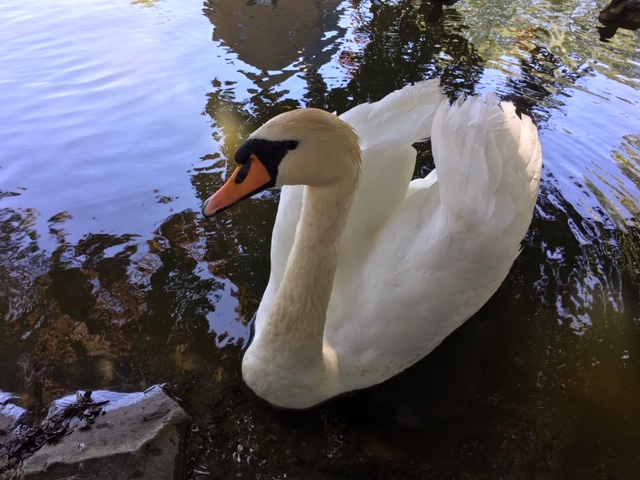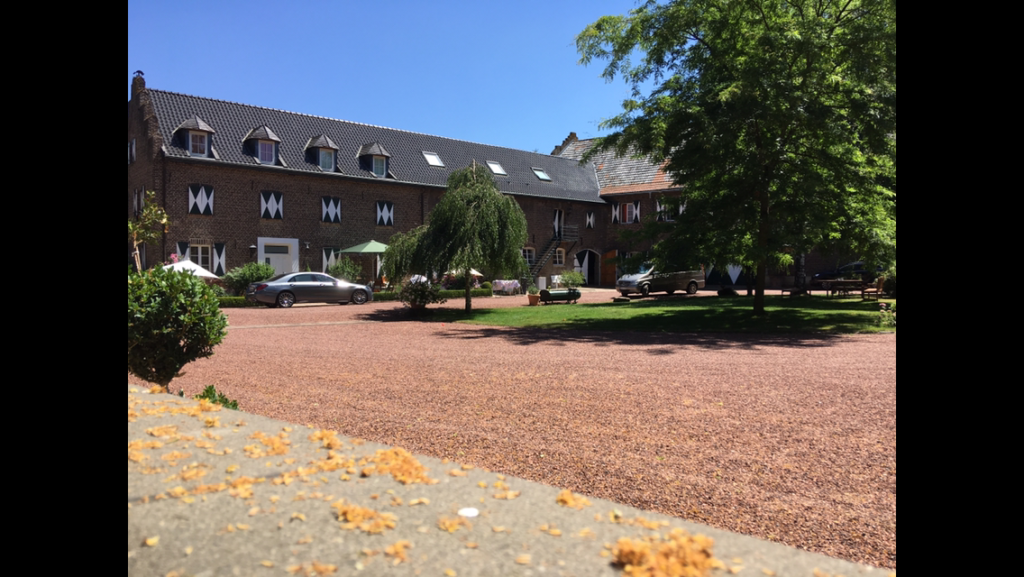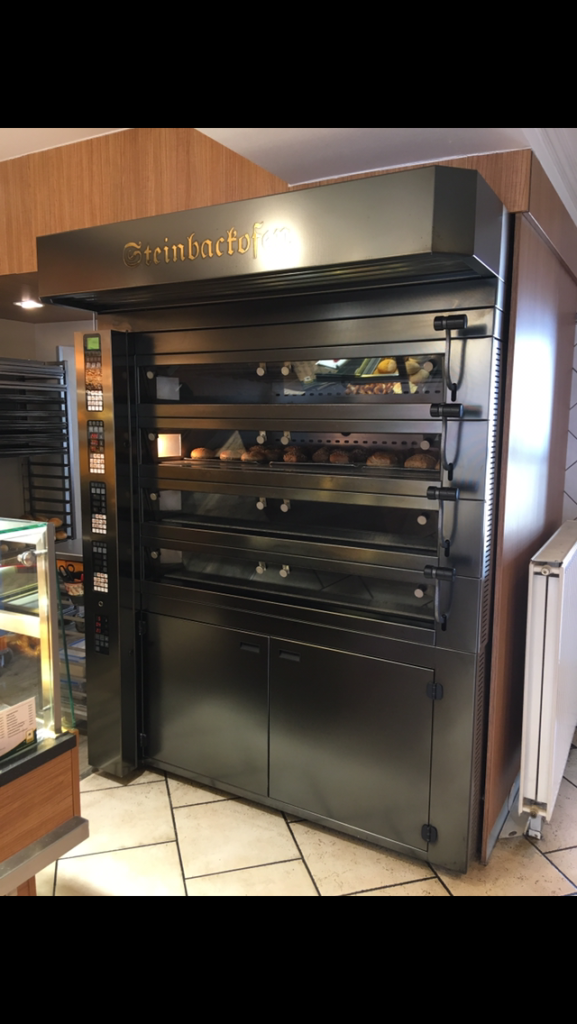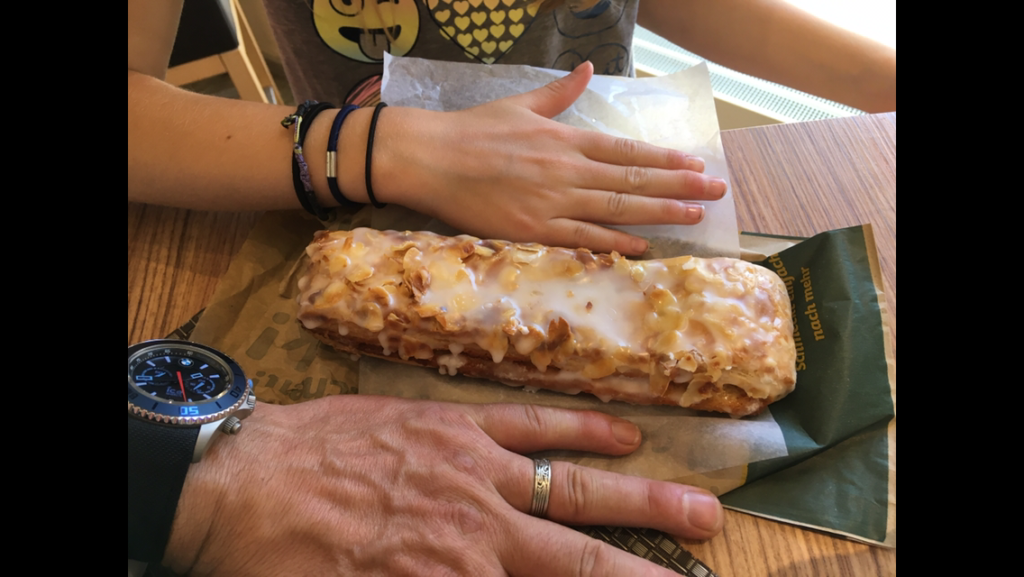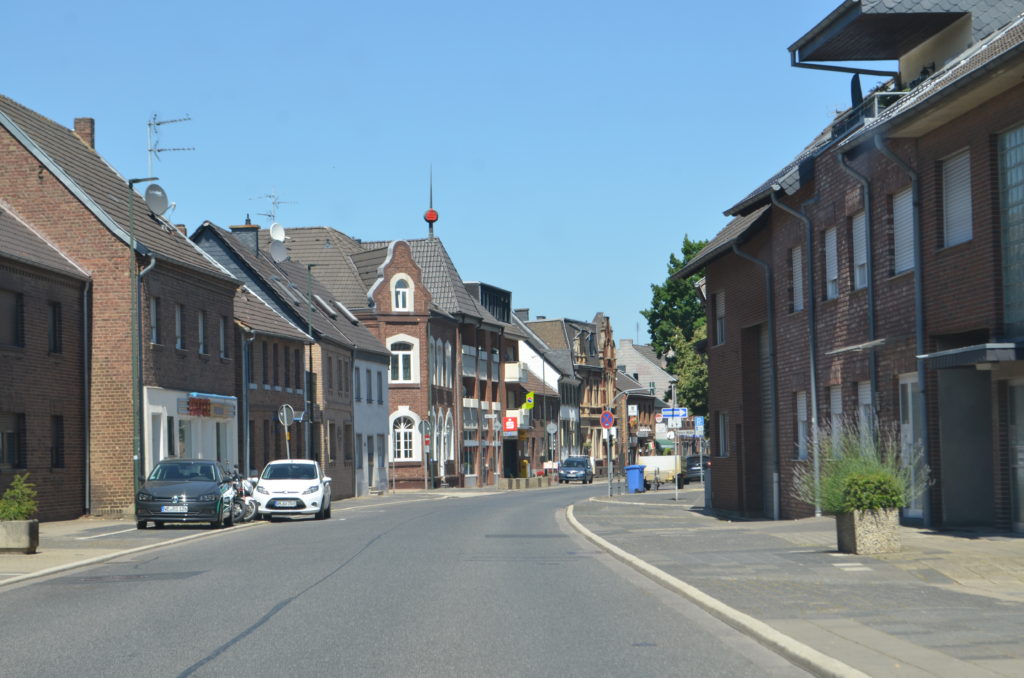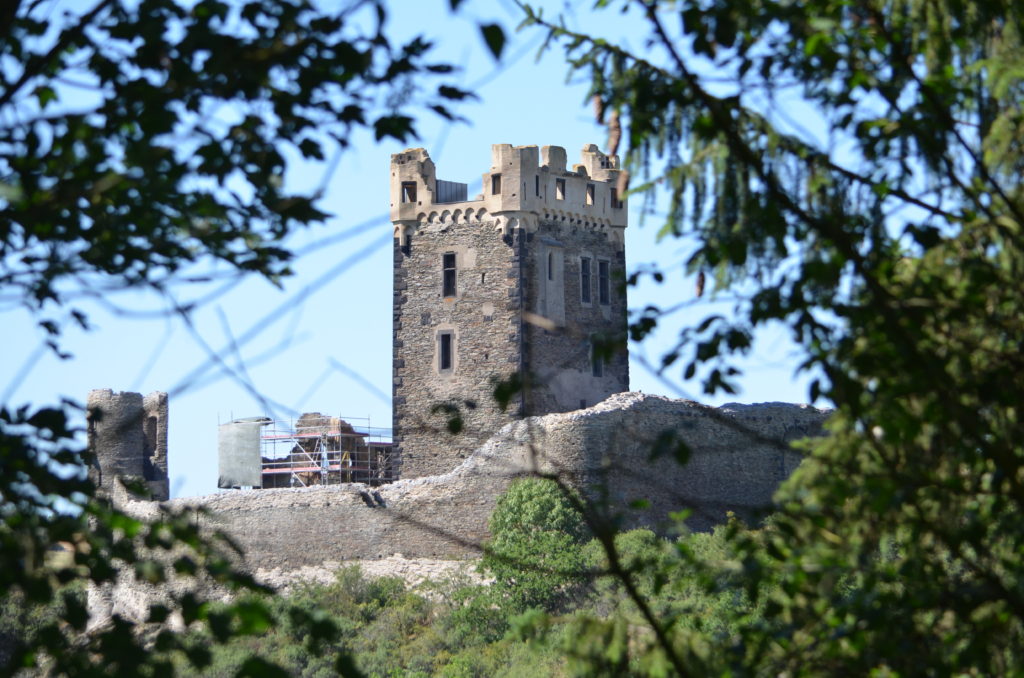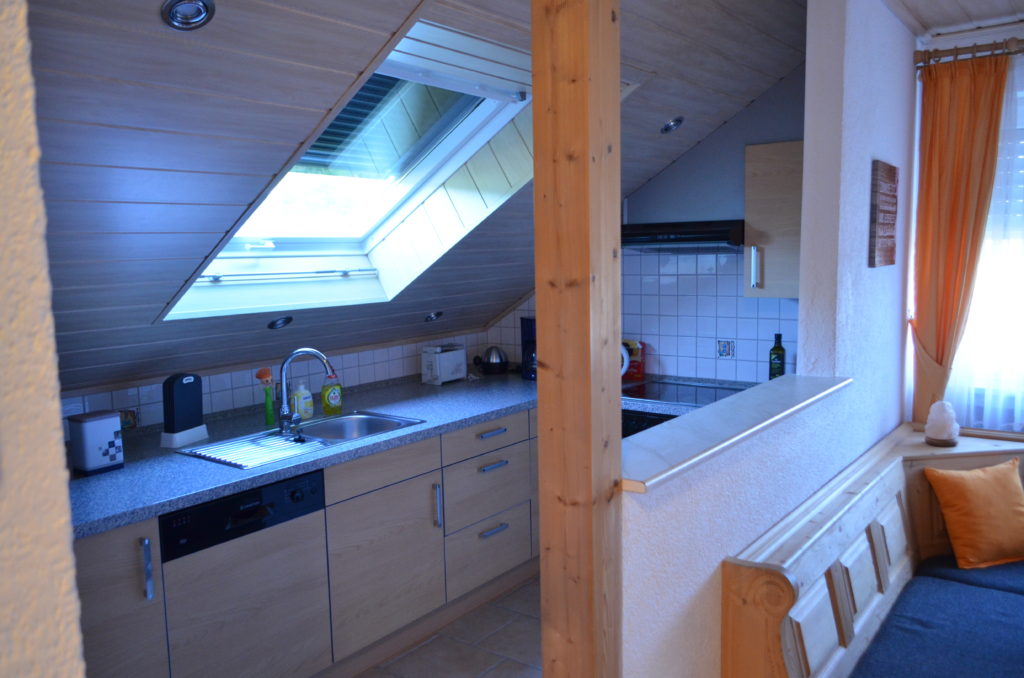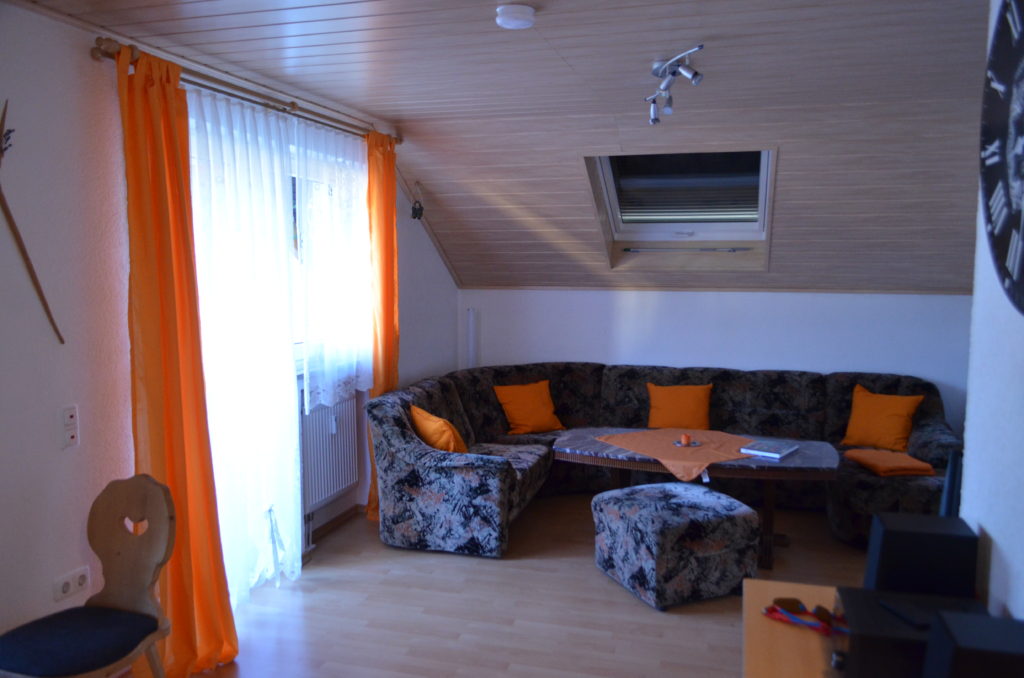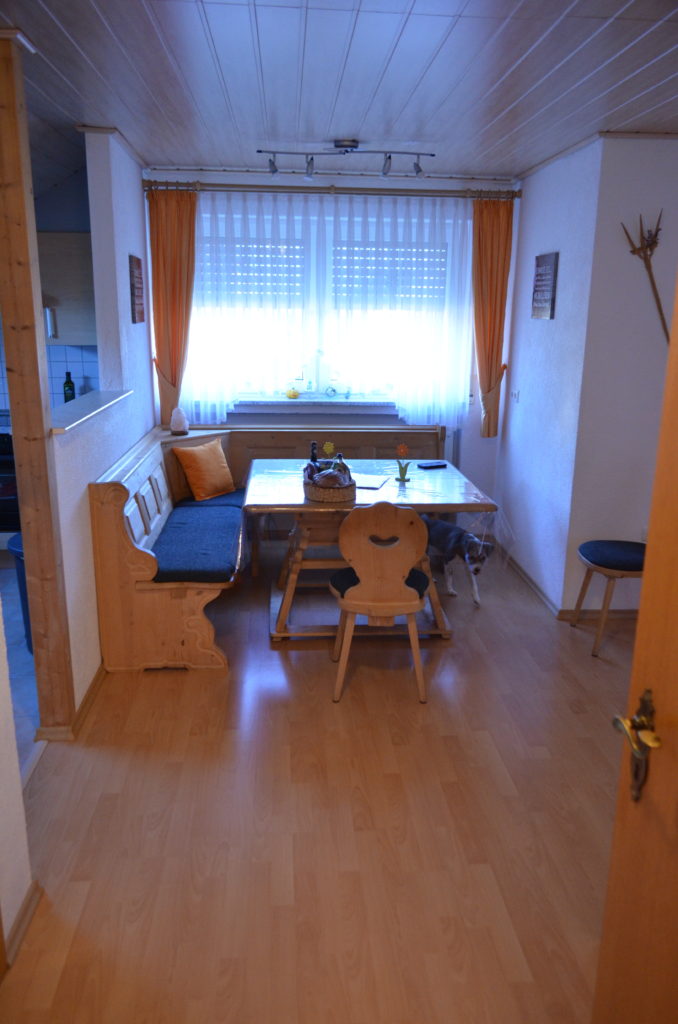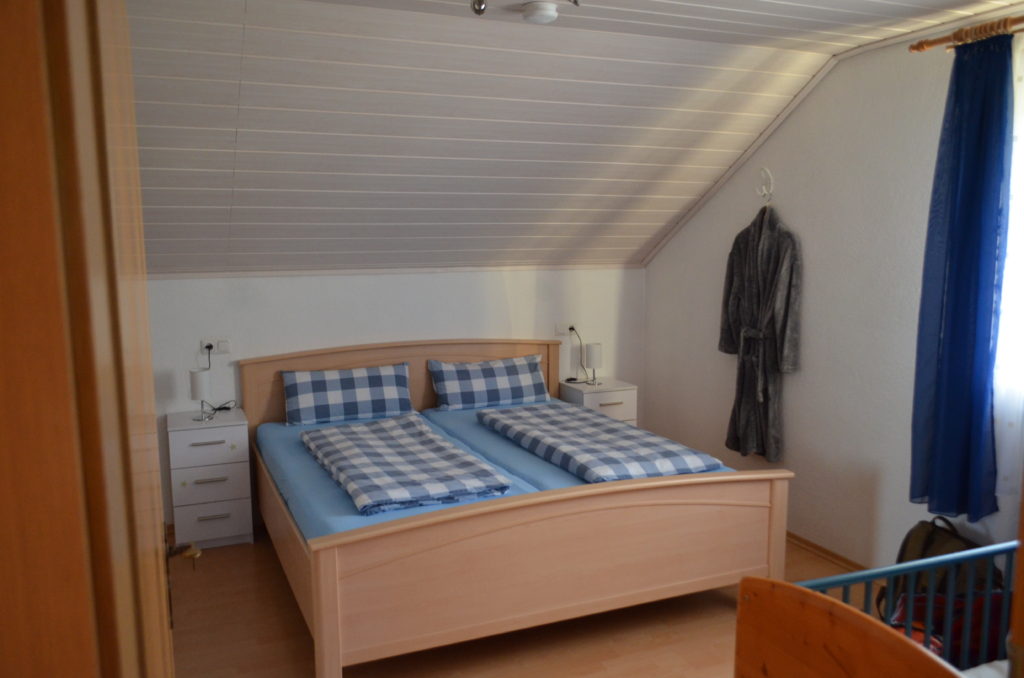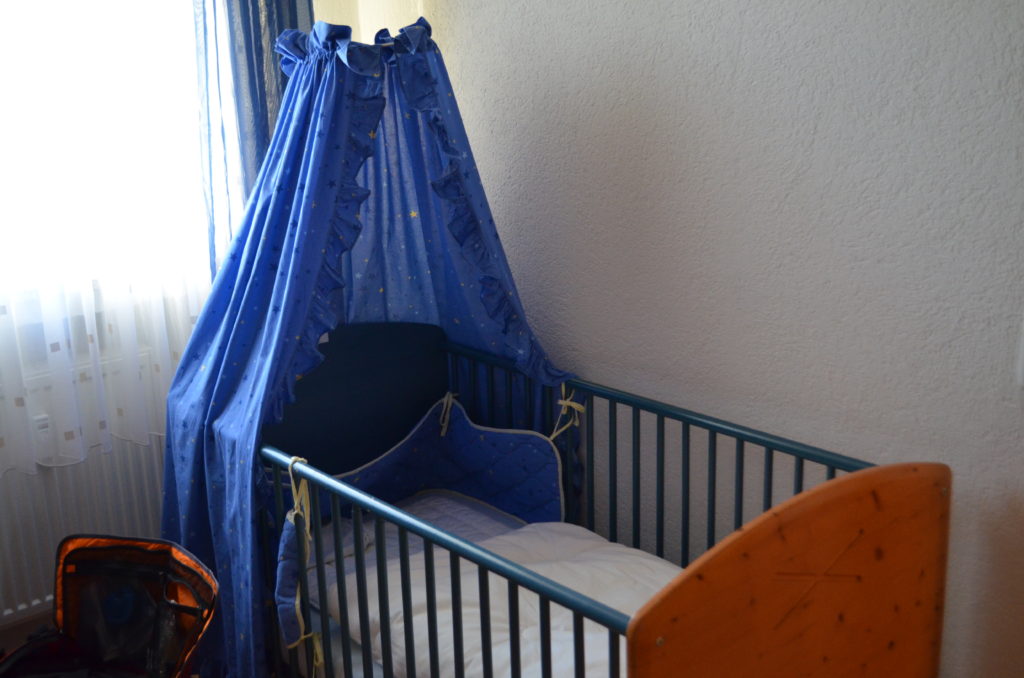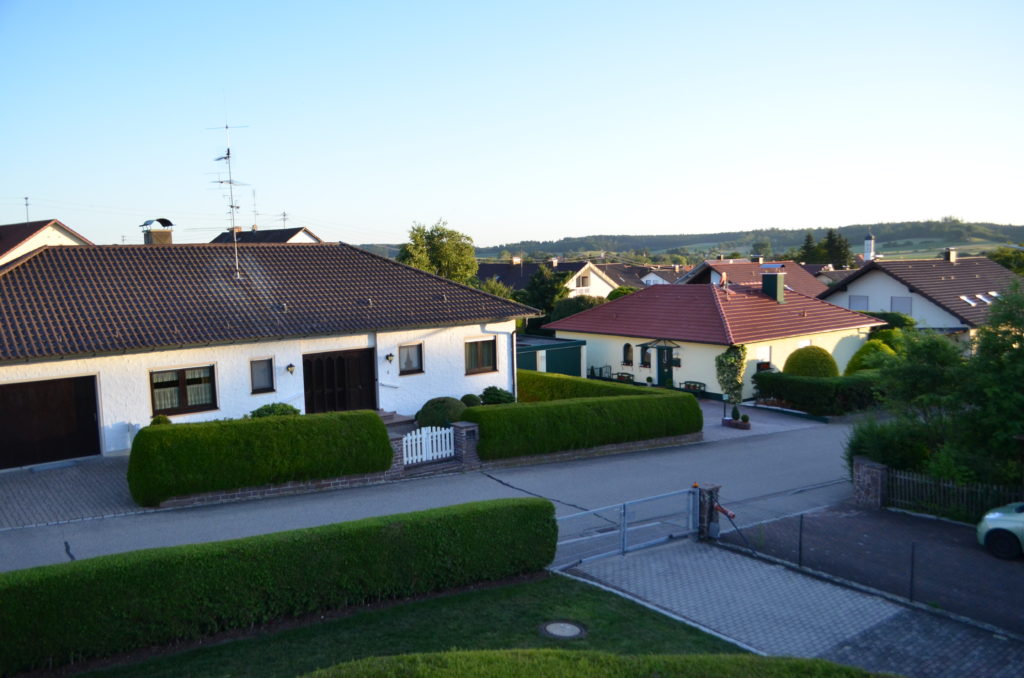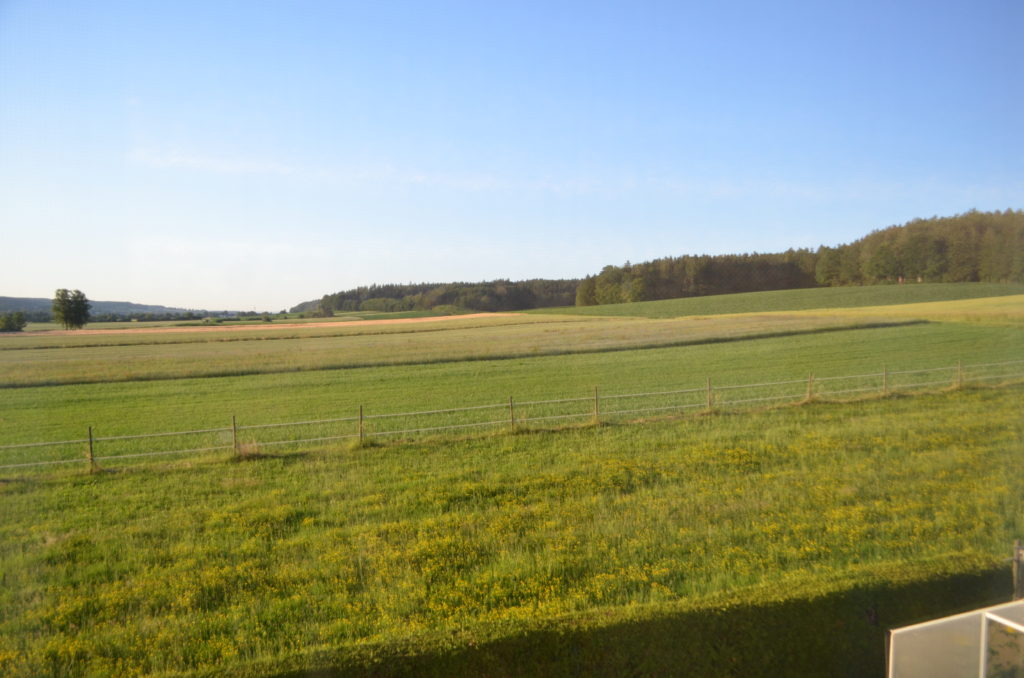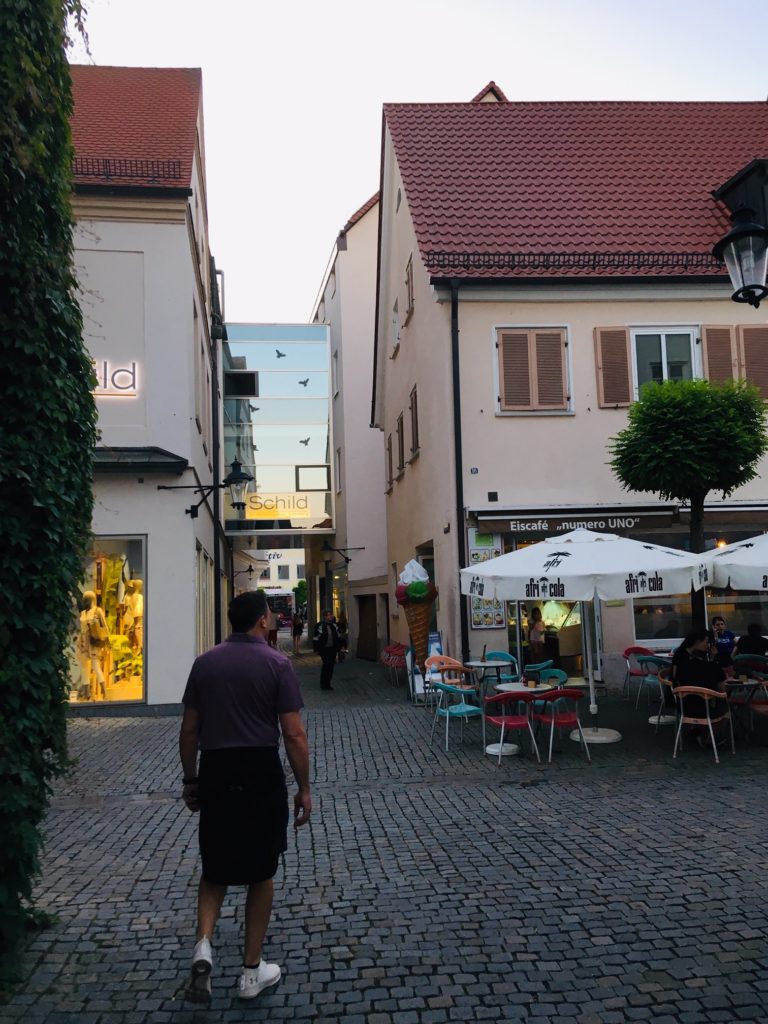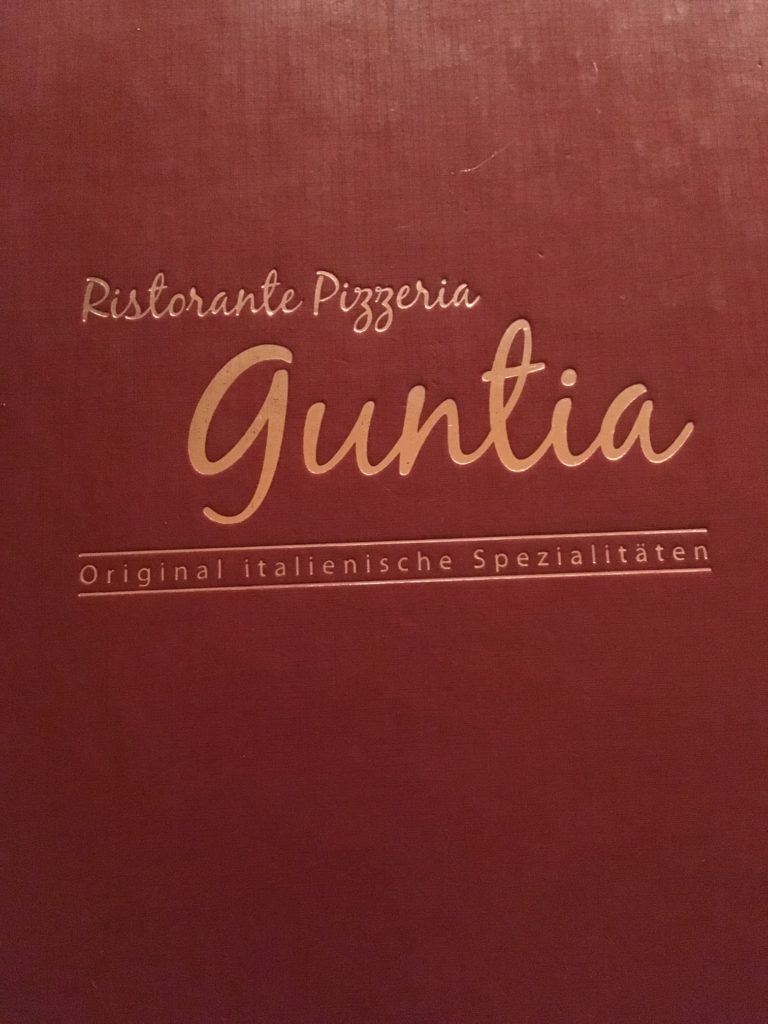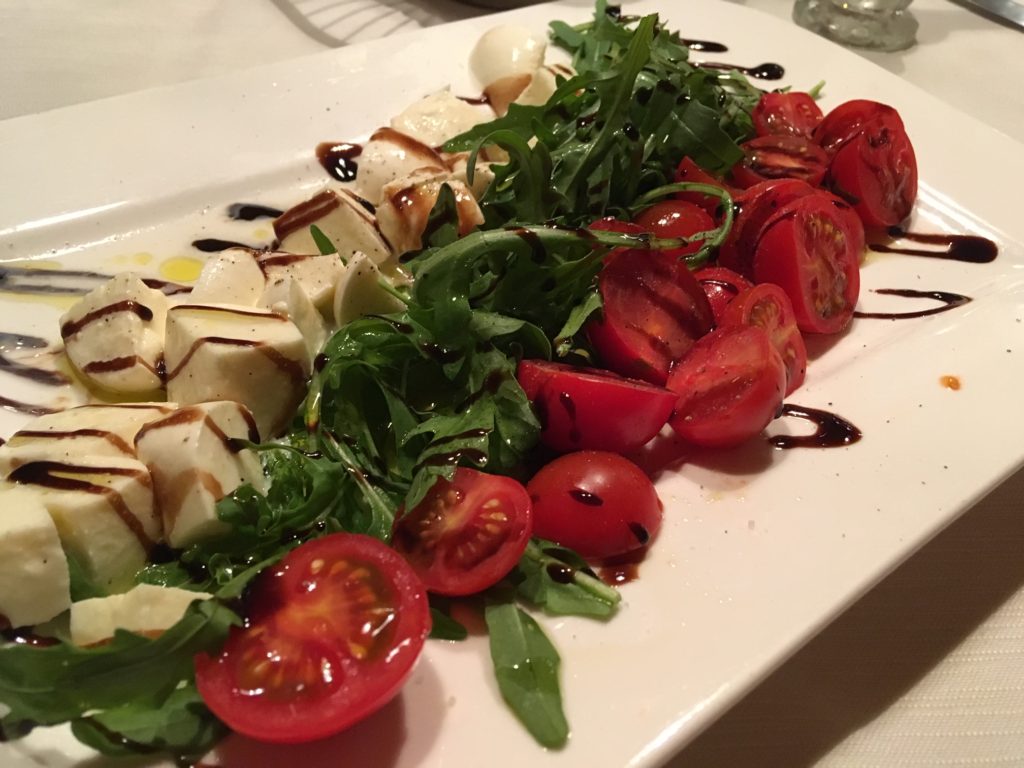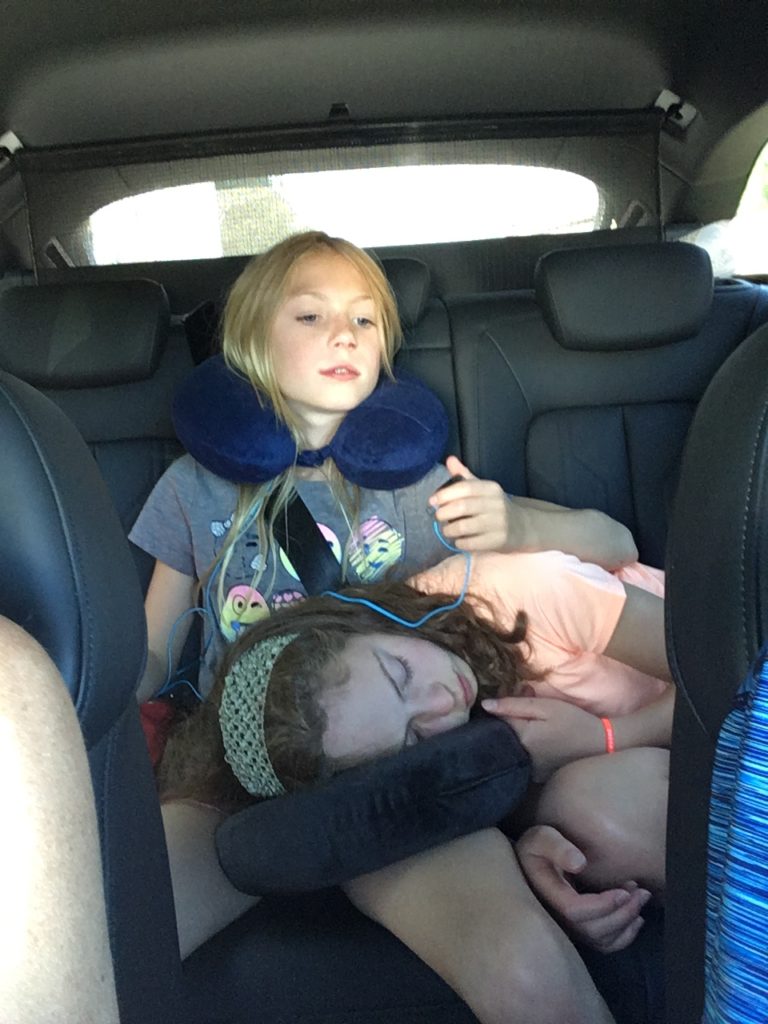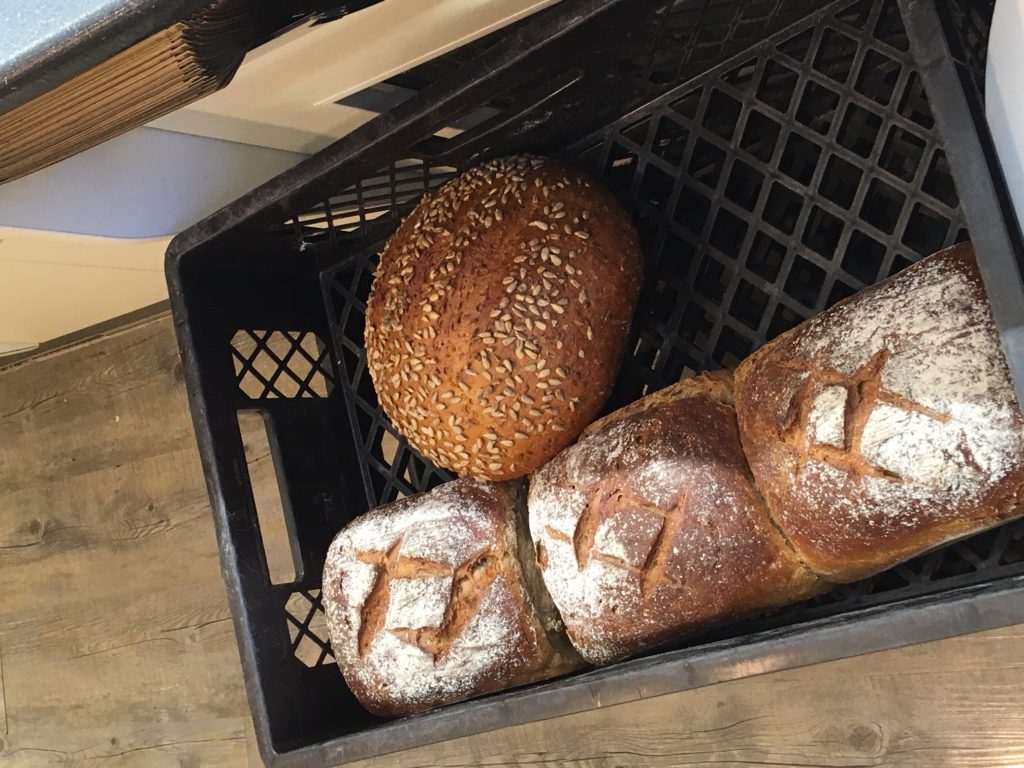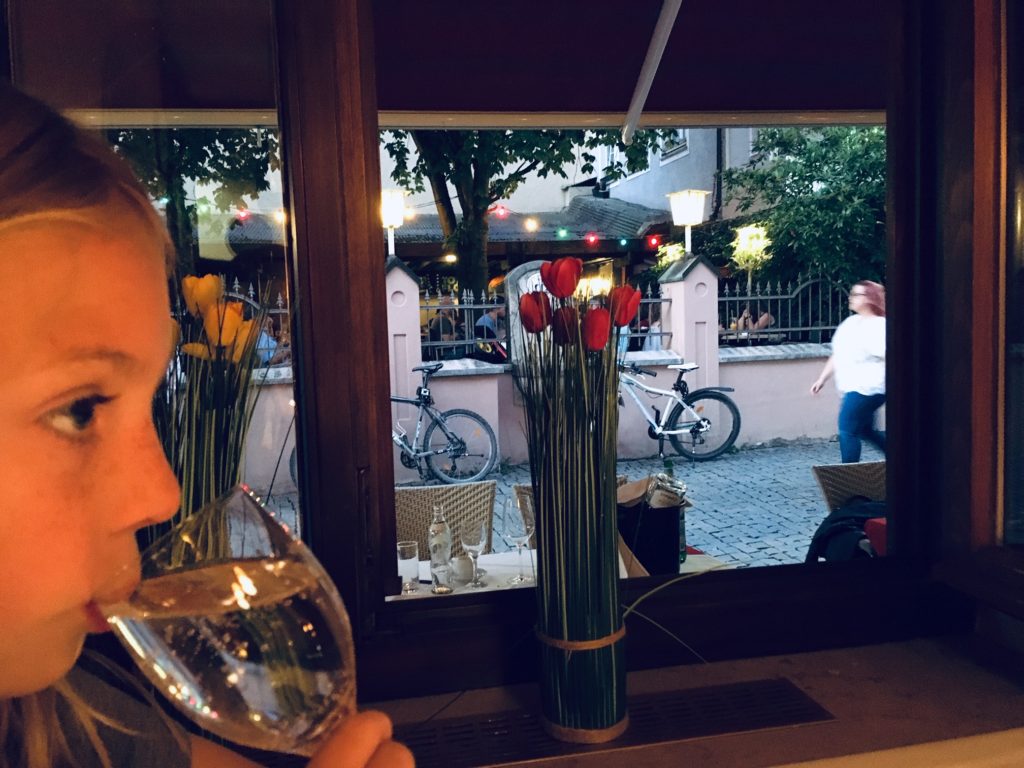Learning while having the time of your life
Little did I know that its Porsche would usurp me as the family social director at the ripe, young age of 13. It was she who has found multiple theme parks that never even registered on either my, or Roger’s radar. The obscure castles and German-centric amusement recreation areas have been hidden in plain sight, arrived to find we are only non-German speaking folk about.
Getting there
Located just outside the city of Stuttgart, right smack in the middle of wine country, with a chateau perched on the nearest hill is Tripsdrill. I didn’t know much about it other than Porsche said we “must, must go there,” so we drove the 2 hours from our place in Kammeltal. Parking is free, plentiful and given it was a Monday, practically empty.
Another mostly empty theme park–this is the entry point, and the “streets” leading in to the rest of the park. Every attention to detail was made in creating this park; not a flower or piece of (real) laundry was out of place.
Two parks in one
For the grand price of about 40 Euros for a family of four, we had unlimited rides in the amusement park, and access to the wilderness park, which is about a 1km drive away, although you can walk. The wilderness park has animals of all types, with an eye towards those that can be held, touched, petted and played with. The lone exception to this is bear exhibit, even the German’s have a line. But the deer, falcons, goats and every other relatively tame, non-carnivore is available.
Two giant treehouses hold up one of those dropping/fluctuating rides that make your stomach go into your throat, then down into your bowels and back again. We passed on that, choosing to pet and scratch the goats that were directly across. The bottom picture would make Andretti proud; it’s a mini-race course.
One thing about the German mentality is the responsibility-based approach. Ergo, there’s nary an attendant or monitor at any station. If your kid gets stomped by a deer or a finger bitten off by a goat, your bad as a parent. At every entry point, one, waist-high swinging door is followed by another. It’s your responsibility to ensure the animal doesn’t escape from the first, or second. And following Darwin’s theory, if you allow a four-legged creature to outsmart you or your child, you get to go chase it.
The upper left is the misting I mentioned, while the right is the agriculture area where the ride is conducted in wine barrels. The bottom is one of three water rides–note the edge on the right–look mom–no rails, or guards to prevent one from falling in.
Moving on to the amusement park, this same attitude prevails. As an example, two water log rides exist, one for kids under 13 (although adults can ride on it as well) and another for adults (although kids above a certain height can also ride). Right next to the water are paths of stone, where anyone and everyone is allowed to sit and dangle their feet. In Germany, and most European countries, it’s all about self-responsibility. If you or your offspring fall into the water and hurt themselves, you pick them up, dust them off go on with your day. Companies are protected from the consumer (prevented from lawsuits), and as such, can offer amazing experiences where one isn’t inhibited. Ergo, parents aren’t on their phones, but watchful and playing with their kids, which is a beautiful experience all around.
An education environment celebrating German engineering achievements
Tripsdrill is not just any theme park, where the rides are the end-all-be-all. This is about the full experience of educating the visitor as they wait in line, grab a snack or drink a glass of wine. Wine making is dominant in this area, so an area consisting of its own, originally-styled wine-making barn sits next to four different smaller buildings, each one with original pressing (or whatever it’s called) equipment. Sorry, I don’t drink or know much about wine, or speak German, but know lots of people who do would appreciate this, along with the free drinks served.
These are just a few shots from the inside of the castle which houses the sleigh roller coaster ride, hence, the entirety of the displays are life size items relating to sleigh making.
A few other examples include the sleigh roller coaster. This is located in a castle, wherein the signs posted show waits of 2 hours at the entry. We arrived on a Monday, so we walked right up and on to the rides, but the Germans, anticipating rush hour, take advantage of every step to educate you on the sleigh making. Within the building are lifestyles, custom mannequins demonstrating all things sleigh, starting with the stables) grooming and doctoring the horses—which actually include the horse, all the tools and items for medicate attention, and even a side stall where a person sleeps near his horses. The next area within the wait line is a huge movie screen, showing a black and white film of the old days of sleigh making. The walkway is one story up, looking down below on a recreated outdoor scene of a winter wonderland. This continues right up until you enter the ride.
Each ride has its own focus, from the kids spinning ride, where the cup is actually a bread bowl, and all the surrounding items focus on bread, to the swing ride that’s a three-story high mushroom, and the wait line is all about agriculture. The entry to the wooden rollercoaster, (the smoothest, and best one we’ve ever ridden, I shall add), is all about mill working. It’s like the anthology of using and applying lumber, the first tools and wheels, to then more sophisticated equipment and applications—cutting, slicing, and manufacturing. All I could think about was my father, who would have cared less about the ride, but hung out for hours oohing and aahing about the machinery.
Notice the wooden roller coaster in the back left? In between that and this monster-of-all wooden forts is the lumber section, where riders waiting in line get to see the history of millworking.
Me and Rog were right there with him, and had a moment of silence in his absence.
I’ve just got to mention a third water ride, which is the rafting. In the US, you have to wait your turn, the attendant directs a group one a time to get in, and that’s that. Well, here, since there’s no attendant, and the round floats come up the metal ramp without assistance, those in line are left to their own to walk on the wet, moving ramp of metal, get in (no straps mom!) which fit 12, three to each section, and sit down before it goes off the ramp, plunging in to the water below. Guess what? No age limit on the kids either, but nary a problem or mishap.
If you’re going to be launched out on a water log, do it from a castle, I say.
A note on rides all around Germany
Pretty much it’s void of lockers. Everyone works on the honor system, which means that the backpack or purse you are carrying is placed on the shelves by the ride. You set it down prior to getting in, go on the ride, then pick it up. A few years back we were leery of this, but shouldn’t have been. Stealing doesn’t happen here. So it was that I’ve been removing my pack with all my camera gear, wallet and sundries, placing it on the shelves or ground, and pick it right up after the ride is done.
A few of the displays regarding sewing–from the most basic, through to the looms, including all the machines and irons. These women worked hard and were talented!
Other niceties
Each and every ride and planter box has been treated with care. It’s as though a master gardener (or 12) have been cultivating this park for years, and this is the glorification of their work. I took over 110 shots of this park, more than all the castles and destinations combined, but know you might suffer from overkill. Yet I’m giving them credit through the mention, because it’s deserved.
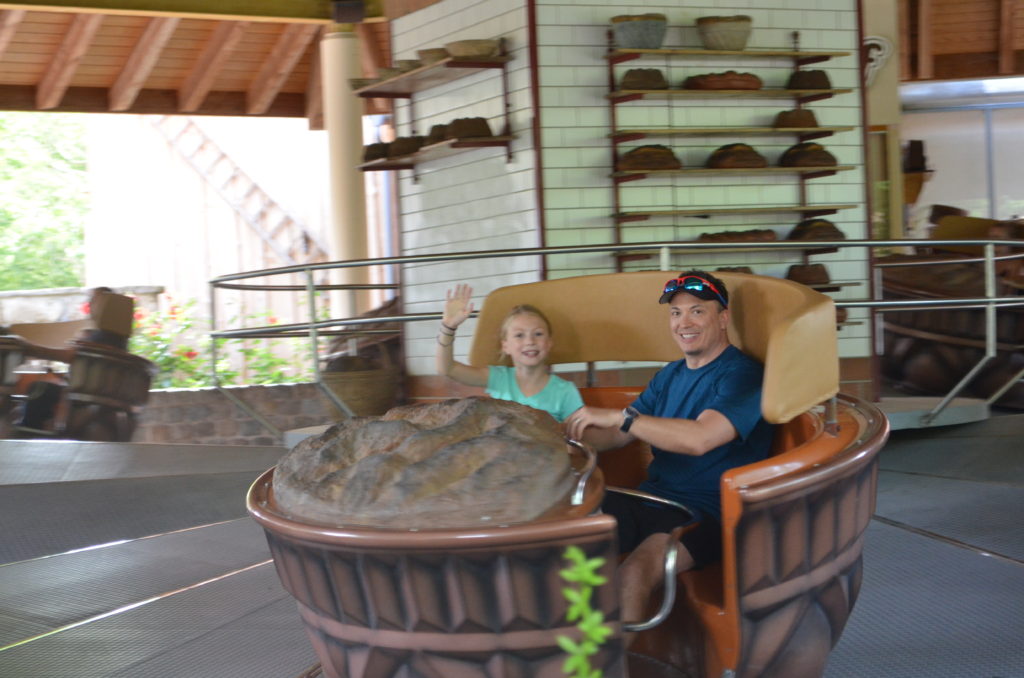
This attraction/ride was all about the history and art of breadmaking, hence, they are in a bunt cake!
Another nice touch are the arched entrances that double as misters, not enough to ruin the makeup or hair, but cool you down. Not a bench exists for resting that isn’t situated under shade and my favorite part (although unused by us?) The metal chaise lounge chairs where adults could take a breather as their kids play in the park. We need these in America!!!
Seriously civilized living; the parents kick back, read, snooze or watch their kids across the flower beds in the large lawn.
The food was tremendously great, pizza, schnitzel and bratwurst, all tasting farm fresh, as well as the baguettes probably baked that morning. Germans know how to eat, is all I’m saying.
Final note
I’ve touched on the honor system, but today’s experience takes the cake. We spent nearly six hours at the park (when we anticipated about three) and couldn’t find our care. Now, there’s only about 4, double parking lanes that were full, and from a distance, I thought I saw our car, but the trunk was open, so we walked on. Reaching the grass parking area, we turned back, double-checking our eyes. Indeed, the trunk was open, because the groceries we’d purchased that day, from water bottles, fruits and veggies. Furthermore, my long lens was in the glove compartment, which was unlocked, and my metal water bottle and sunglasses were also in the car.
We realized that Rog’s remote must have gotten accidentally punched as we walked away, and four six hours, the trunk was open, and car unlocked. Not a single item was out of place or missing.
One word. Wow.
Final tip to a new traveler
I lied, another note. When it’s lunchtime, everything just down. The grocery stores. The banks. The gardening shop. Trust me, we’ve tried all three things between the hours of 12-1 over the last five days and can vouge that it hasn’t mattered what town, it’s all done for, which actually, is a great thing. Everyone takes the break at the same time, for a full hour.
What I loved
All of it. Period. The end.
What I didn’t….
That the three water rides closed at 4:30, while the park itself closes at 7. The wilderness park doesn’t allow entrants after 6 p.m. to allow an hour for late starters.
Recommendation
An absolute must if you have kids, or love German history and manufacturing. Rog and I agreed that if we lived here, we would have seasons passes. I’m not sure I’d ever get tired of Tripsdill.

